October 31, 2014
Vol. 90, No. 8
@HUStudentPubs
April 25, 2014
Facebook: The Link
Vol. 89, No. 18
@HUStudentPubs
Facebook: The Link

October 31, 2014
Vol. 90, No. 8
@HUStudentPubs
April 25, 2014
Facebook: The Link
Vol. 89, No. 18
@HUStudentPubs
Facebook: The Link
1. What is one of your favorite Harding memories?
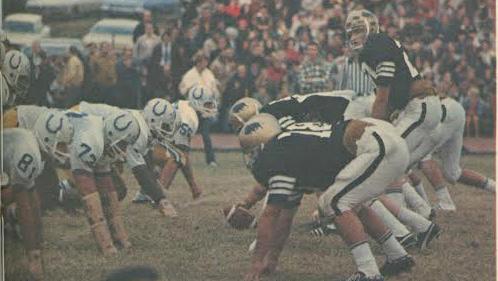
3. What is one thing you can’t live without?
2. What is your favorite Sonic drink?
Who is one famous person you would invite to dinner?
2. Unsweet tea with blackberry.
1. Since freshman year we have had an annual camping trip to Heber where we try to cook gourmet meals over a fire and I try to use all my wilderness skills.
1.
3. My morning co ee.
4. Jennifer Lawrence.
5. Belle from Beauty and the Beast.
Editor Kaci Hitchcox, a Doctors Without Borders nurse who returned to the states after working with Ebola patients, announced Wednesday that because she has shown no symptoms of the disease, she does not intend to agree to the 21-day quarantine imposed upon her by authorities.
According to an article on www.usatoday. com, Hitchcox believes her constitutional rights are being abused in a way that is not based on any scientific evidence.
2. What’s Sonic? (I’m a northerner, I don’t go to Sonic).
3. Food.
4. Morgan Freeman.
5. Megan Smith.
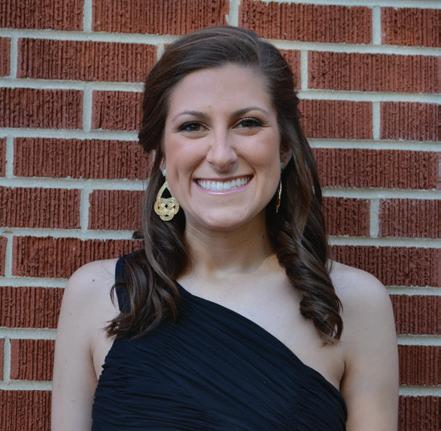
1.
1. Club week 2011 when I (was inducted).
2. Does an Oreo blast count?
3. Music and (this is probably a typical girl answer) co ee.
By Joshua Johnson News EditorWhen freshman Thanaydi
Camden Henry
Sandoval began taking Aspirin and Tylenol regularly in high school to relieve pain below her knee, she had no idea that a tumor was growing in the top of her shin. Now a patient at St. Jude’s Hospital in Memphis, Sandoval is taking a break from being an international business major to receive chemotherapy treatments and recovery therapy that will last most of the school year.
According to Sandoval, she is currently three weeks into a six week window therapy program, which is an experimental procedure usually utilized to help prevent or treat cancer relapse. She will most likely undergo surgery in early spring of 2015 and plans to return to Harding next fall.
“The people at St. Jude’s are amazing,” Sandoval said. “They worry about every little thing for me. They’ve really made me feel comfortable while I’m here.”
Mike Allen, assistant professor of business and Sandoval’s adviser, said Sandoval can be described as sweet-spirited, but would also include the words “driven” and “motivated.”
“Anytime there’s something new, she doesn’t shy away from it,” Allen said. “Rather, she goes after it and attacks it with vigor.”
Sandoval was part of Upward Bound, a grant program housed at Harding that works with area high school students who intend to receive a college education, according to Katrina
4. Queen Elizabeth.
5. A tie between Queen Elizabeth, Kate Middleton and Anthony Bourdain.
Smeltzer, director of Upward Bound. Smeltzer said Sandoval has been preparing for college through Upward Bound since 9th grade.
“She is an outstanding young woman, both in mind and spirit,” Smeltzer said. “This unexpected illness was a shock but I know Thanaydi will hold to her strong spirit and get through this tough year. I, for one, am thankful she chose Harding. I look forward to seeing her on campus next fall with books in hand, ready for classes.”
Sandoval said she cannot wait to start her classes again and looks forward to being part of the Harding experience again.
“I think I’m going to try (being in a social club) next year,” Sandoval said. “I started playing on an intramural volleyball team on campus, and I only got to play a few games, but I’m really looking forward to doing more of that next year as well.”
Sandoval said she is glad she chose Harding.
“Everyone has kept in touch with me, and I really appreciate that,” Sandoval said. “I had just started, so I didn’t know many people at first. But even though I didn’t know them very well, they have still been there for me when I needed them.”
Allen said that Sandoval is most encouraged by knowing that people are praying for her and thinking about her.
“Coming to Harding allowed her to join the Harding family, which has allowed all of us to become her extended family,” Allen said.
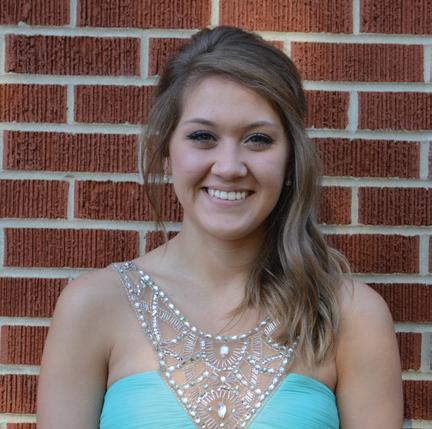
2. Blue raspberry slush with nerds.
3. Baked goods.
4. Anne Hathaway.
5. My mom. She’s the greatest.
While some Americans are worried about the spread of ebola in the U.S., sophomore Riley George, who is studying abroad in Zambia, said both Zambian locals and the students in the HIZ program still feel safe because Africa is so massive.
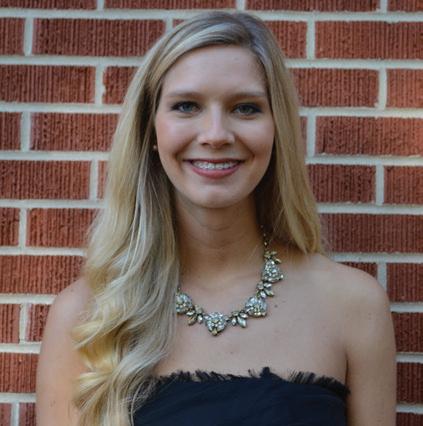
“Granted, they aren’t taking it lightly and people are taking precautions, but most people don’t realize how huge Africa is,” George said. “If the epicenter of the Ebola outbreak is in Liberia, then I’m currently more than 3,000 miles away. That’s more than the distance between L.A. and Portland, to put it in U.S. perspectives.”
George said that in contrast to the panic many Americans are experiencing or promoting, Africans view the situation with cautious optimism.
“Nowhere in Zambia have I found a populous so up in arms and worried about catching Ebola as the U.S., who is currently twice the distance away from the outbreak,” George said. “No, people here aren’t unconcerned or callous, but they also know the likelihood of contamination is minimal, so they focus their attention on helping the sick around them.”
George said in his opinion, the U.S. should increase aid to the most highly affected countries
According to CNN
in order to eradicate the virus at its source.
“In times like this, people need all of the help they can get,” George said. “Supplies are always appreciated, but manpower is more so.”
Harding students on American soil recently formulated their own plans of action for Ebola treatment for a Capstone nursing project. Dr. Susan Kehl, dean of the Carr College of Nursing, said her students learned about the proper measures to take when dealing with such a dangerous disease and then compiled all of their research into a document, which she distributed to the entire nursing department.
According to Kehl, the document includes information on Ebola, its spread in Africa, how healthcare personnel should evaluate potential patients and what personal protective equipment healthcare personnel should wear.
In spite of the alarm recent American Ebola cases have caused, Kehl said our nation is well equipped to contain and treat this disease.
SEE EBOLA, PAGE 2A
Writer
StudentOn Tuesday, Nov. 4, the Lyceum Concert Series will feature The Rhodes Show, including performers junior Sam Morris and senior Savannah Morris. The concert will begin at 7 p. m. in the Administration Auditorium and is $3 or free with a CAB pass.
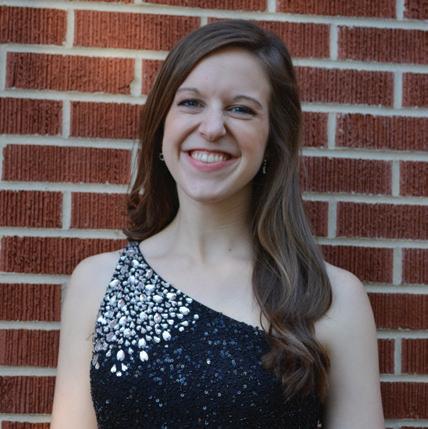
According to Savannah Morris, The Rhodes Show started in the 1930s with the Morris’ grandparents, Dusty and Dot Rhodes and Dusty’s brothers, Slim Rhodes, and Speck Rhodes. These four were the traditional members of the The Rhodes Show that toured the Mid-South and had their own Memphis-based television show that aired for more than 25 years. The show was popular and featured several other famous musicians including Elvis Presley. The band now includes seven family members and junior Austin Westjohn and sophomore Heath Bennett who will all perform at
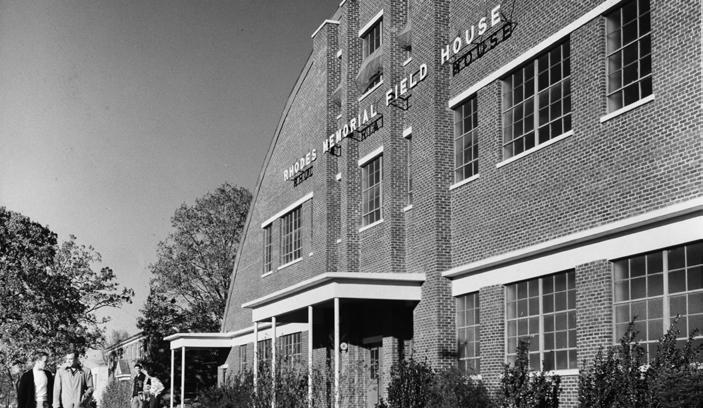
‘Shrek’ actors, page 2C
Find out a little about the people behind Shrek, Fiona, Lord Farquaad and Donkey.
Harding for the Lyceum.
Throughout the years, all members and generations of The Rhodes Show have worked with multiple well-known artists. The Morris’ mom was a back up singer for many of Al Green’s number one hits as well as for Elvis.
Both of the Morris’ are third generation family members in The Rhodes Show. Working with their family has not only made them all closer as a whole but has made them closer musically as well.
“Music is my life, and music is what I love to do,” Savannah Morris said. “God couldn’t have given me anything greater than being able to share music with my family.”
Both Sam and Savannah Morris are active in Harding’s music community. They are both members of Belles and Beaux and perform individually all around Searcy. This performance will show what their musical roots are.
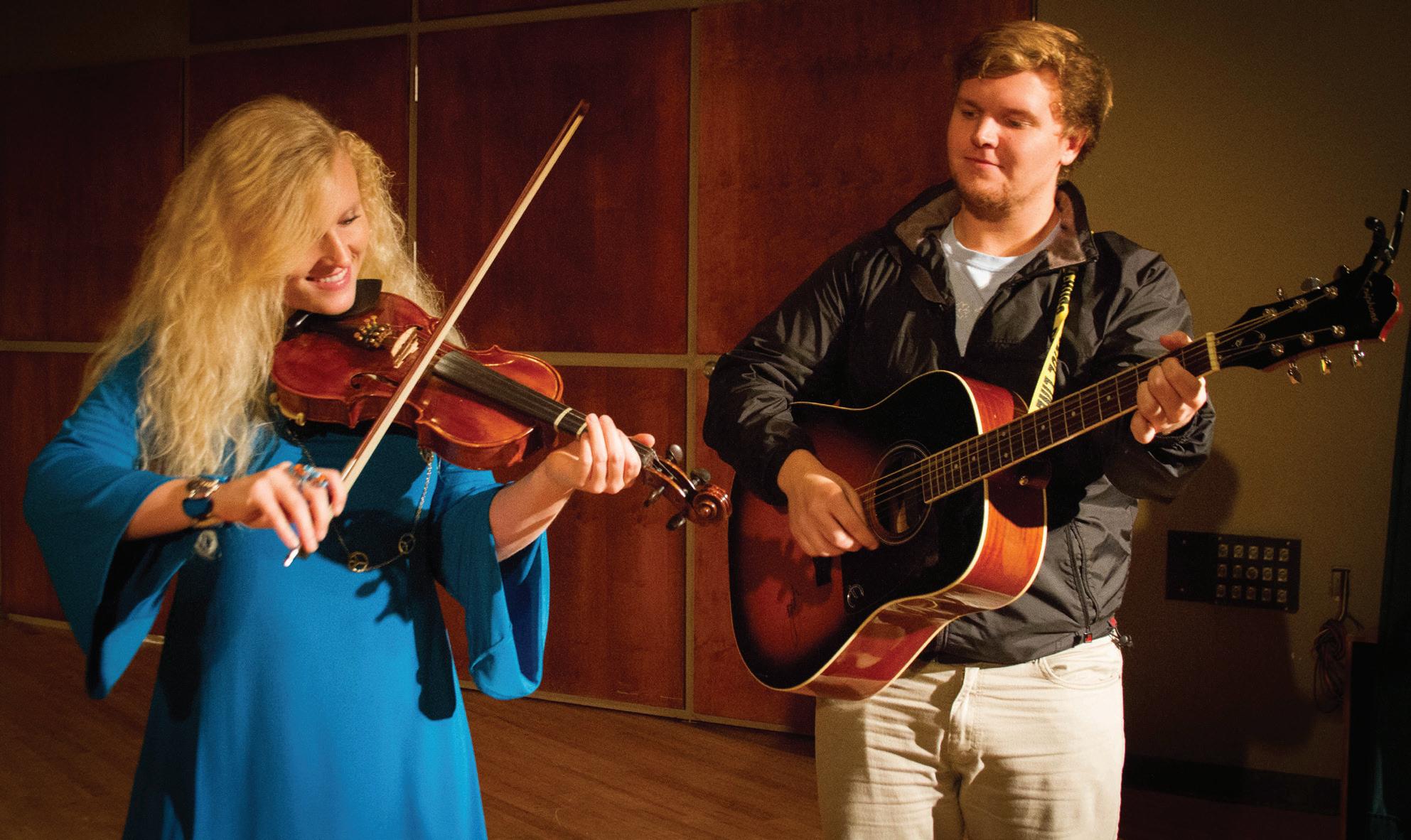
“I’m really looking forward to this
5. If you could be anyone besides yourself, who would you be? Football, page
Best Fall Films, page 4B
Check out some staff favorites for fall movies — from scary to comical.
show because very few Harding students really know what Savannah and I do as far as performing outside of campus,” Sam Morris said.
The Lyceum Concert Series has been an ongoing event on Harding’s campus for almost 60 years. The series features different kinds of musical performing genres for students to enjoy. Music department chair Dr. Cliff Ganus III works closely with the concert series.
“Any university needs to provide to its students and its community the opportunity to see and hear a variety of performances,” Ganus said.
While The Rhodes Show has been primarily country, they plan on doing some popular pop song covers and some original songs written by Sam Morris and Bennett.
“These are talented musicians who will put on a good show — and Savannah and Sam are part of our family as well as theirs,” Ganus said.
The College of Business
Administration is hosting its fifth annual Faith and Business Symposium today in the J.E. and L.E. Mabee Building from 8 a.m. to 3 p.m. Open to all students, faculty and campus visitors, the symposium is comprised of a series of 20 lecture panels by 13 business professionals connected with the university.
Speakers in this year’s symposium are from all over the states and from Searcy, including Ray Montgomery, CEO of White County Medical Center and Stephen and Amy Rose, Harding alumni and current owners of Bailey’s Pizza.
“The students enjoy it and the speakers give them an excellent opportunity to get in front of some students and share their experiences,” said Bryan Burks, dean of the college of business administration. “My ultimate goal is that they get a better understanding of what it’s like to be a Christian business professional through the stories, challenges and advice.”
Burks said the secondary goal of the event for students is networking and making connections that may lead to future opportunities.
From the perspective of the speakers, Burks said he believes this is an excellent venue to put in front of this generation of students.
“I want them to walk away excited about the future,” Burks said. “It’s a great way to plug them into Harding University and to be part of our mission. Harding needs to find ways to utilize our alumni base and this is one of the ways. I hope this leads to future job employment, I hope this leads to internships for the students, and I hope this leads to future involvement.”
According to Burks, future symposiums will have more diverse speakers and become an event hopefully attended by members of the community as well as alumni.
“Right now to serve the students, we are at the right size we need to be,” Burks said. “But if we truly want to see this as an event for the community and alumni, I’d love to see it grow.”
Senior Rachel Slatton said she has attended the Faith and Business Symposium in the past and is looking forward to this one. Presentations include, Alternative Employment Options with an Accounting Degree presentation by Peyton Tucker and the #Christians at WORK presentation from Bill Arnold.
“I think this Symposium is providing a very accurate
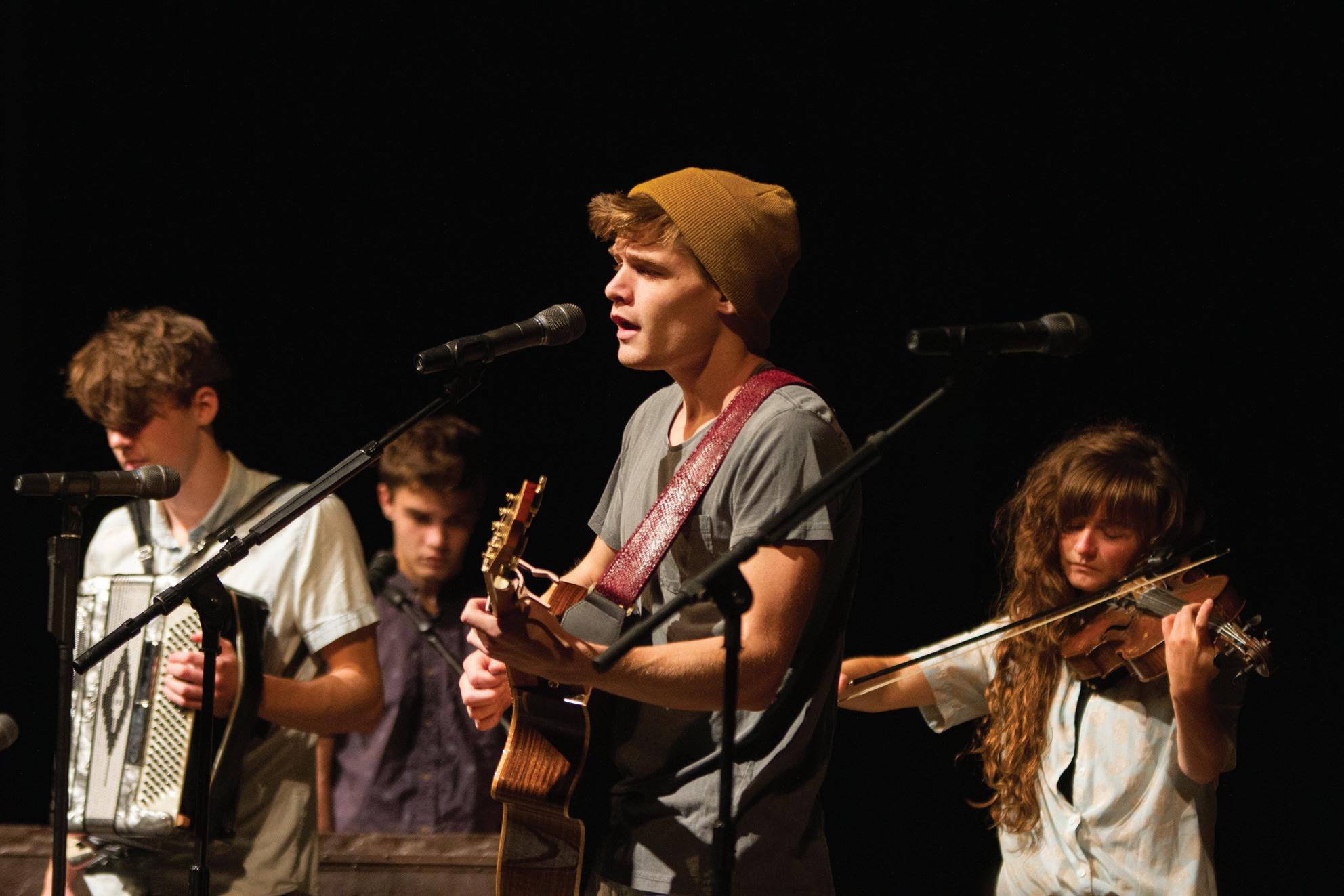
Discipleship is something that happens on an individual basis ... as we allow (God) to disciple us.
-Jacob Robertson, Seniorview into life after graduation,” Slatton said. “Since most of the speakers were once students in our shoes, they know the quality of our education that we are receiving in the College of Business at Harding. And that allows them to give us insight that is specifically tailored to future Harding grads.”
Slatton said that she encourages students to take advantage of the presentations because of their view into what the future entails for Harding graduates.
“It is very helpful to have some insight into entering the workforce before you graduate so that we know more of what to expect,” Slatton said. “I believe that faith and business can go together just as much as faith and any other industry.”
College of Business and Administration classes are canceled today due to the lecture series, and instead, business students are required to attend some of the presentations.
The Father’s Business: Our Call to Discipleship, a Bible study in McInteer 150 presented through a series of lectures from professors and Harding alumni, kicked off yesterday and is currently in session until 1 p.m. on Saturday, Nov. 1.
Senior Jacob Robertson will be speaking today at 10 p.m. from a students’ perspective on our call to discipleship.
“I’ve been studying lately on discipleship, especially the need for younger students to seek out older students as mentors and for older members to seek them out,” Robertson said. “Discipleship is something that happens on an individual basis, but also collectively as the body of Christ, as we allow Him to disciple us.”
Robertson said he is excited for this event because of his passion for Secret Church (an on-campus devo) and digging deeper into God’s word as a student body. He’s also excited to hear from the Harding alumni who have stepped out and served both on campus and beyond.
“We all need to be about our Father’s business, so I’m anxious to learn more about what that means and looks like, especially through the medium of Jesus in Scripture,” Robertson said.
“We are blessed as a nation with the resources and infrastructure to deal with the Ebola spread to our country,” Kehl said.
Kehl said that she too believes the most beneficial thing for America to do is send more help toward the source of the problem.
“I believe the World Health Organization, Christian and humanitarian groups are attempting to stop the spread of EVD with resources, medical expertise and evi-
The second annual Holiday Craft Fair will be held on Friday, Nov. 7, and Saturday, Nov. 8, from 10 a.m. to 5 p.m. in the student center. The student center will be filled with handmade items by artists from several states across the midwest. Debbie Howard, vice president of Women for Harding, is in charge of the craft fair.
“We have whimsical snowmen painted by Sara VanHorn, an artist from Missouri,” Howard said. “We have beautiful Santa (figurines) painted by Harding employee Deb Johnson, and there will be wreaths made by Neely Wolf.”
Howard said that there will be antiques, T-shirt quilts, stained glass, scripture windows, crocheted scarves and headbands for sale.
Neely Wolk, assistant director of admissions, said she will be selling handmade burlap wreaths at the craft fair.
“Some are holiday themed, some are fall, some are just fun,” Wolf said. “Every one is unique.”
Twenty-four vendors will be displaying and selling their crafts this year, compared to last year’s eight vendors.
“We had eight vendors for a one day event,” Howard said. “We are so excited about the growth this year.”
This year, there will be a special vendor for a book written by the senior officer of the Harding fund, Ken Bissell.
“We will also be selling Ken Bissell’s new biography about John Prock, the late Bison head football coach, ‘Many Sons to Glory — The John Prock Story’,” Howard said. “A portion of the proceeds from the sale of his book during the craft fair will benefit the Women for Harding scholarship fund.”
According to Howard, 100 percent of the proceeds will be given to the Women for Harding fund to be handed out on need-based scholarships. The Women for Harding will also have a booth and will be selling many Harding logo items, in addition to a brand-new cookbook called “All The Good Stuff - The story of Charlene Prock and her lifetime collection of recipes.”
NEW YORK — Reports of Tom Cotton ads have appeared on homosexual dating site Grindr this week, associating the politican with the National Rifle Association, according to CNN. The ads went viral on Twitter and other social media outlets. While the ads feature NRA branding, NRA representatives said the ad has been doctored and that the organization has never purchased ad space on Grindr.
ATLANTA — The Dallas nurse who contracted Ebola was released from the hospital on Oct. 29, according to Time. Amber Vinson, 29, was diagnosed with Ebola after treating the first patient diagnosed within the United States. Vinson was diagnosed Ebola-free and released from the hospital in Atlanta this week.
“First and foremost, I want to thank God,” Vinson said.
dence-based public health strategies,” Kehl said. “One example is Samaritan’s Purse, a Christian international relief agency that (is) seeking to provide resources to those countries where EVD is raging. The scope of the problem is significant, so more assistance is and will be needed. I believe that we should respond to others in need. I have lived in Liberia, I know the situation is grave and the needs are great.”
The American Studies Institute will be hosting guest speaker Eric Greitens on Thursday, Nov. 13, at 7:30 p.m. in the Benson Auditorium. Greitens is a former Navy SEAL. He was deployed four times during the global war on terrorism, and his deployments took him to Afghanistan, Southeast Asia, the Horn of Africa and Iraq. After a close call with a truck bomb, Greitens said he felt that he should use this second chance at life for something good. He came back to the states and formed the nonprofit “The Mission Continues,” an organization that encourages veterans to serve in their communities when they return home.
Greitens has written three books. His latest book, “The Warrior’s Heart” has been recognized by Barnes and Noble as one of the best teen books. His second book, “The Heart and the Fist: The Education of a
Humanitarian, the Making of a Navy SEAL,” was a New York Times bestseller, and his first book, “Strength and Compassion,” was named ForeWord Photography magazine’s book of the year.
“We felt that the ‘compassion’ aspect that Greitens brings to the table aligns with our mission at Harding and especially the medical missions that Harding is involved with,” ASI Associate Executive Director Dr. Bob Reely said.
Senior Cooper Thompson said he is looking forward to hearing Greiten’s story.
“I think I’m most looking forward to hearing about the
former (Navy SEAL’s) internal battles he faced while carrying out the specific missions he was assigned and getting some advice on how to cope with these internal battles,” Thompson said. All of Greiten’s experiences help him share the importance of being resilient, overcoming adversity and showing compassion in order to become a better leader. Upcoming speakers in the American Studies Institute’s Lecture Series include Archie Manning on Feb. 19, 2015 at 7:30 p.m. and Former Prime Minister of Greece, George Papandreou will speak on April 23 at 7:30 p.m.

Two thousand and eight. The year I graduated and set out on my own, listening to God and finding adventure along the way. I distinctly remember the Lord calling me to leave everything that had become so comfortable and move to Colorado. With fear and uncertainty, I followed Him. That first winter, I developed new and amazing friendships. My roommate Mary and I soon began plotting how we would spend the winter saving all the money we could in order to respond to God’s calling in more significant ways during the summer. This led to many adventures.
One summer trip took us to Calcutta, India, to volunteer at some of Mother Teresa’s children’s homes. With careful preparation and much prayer for safety, we went. There are moments in life that leave you forever changed, and this was one of those moments for me.
I can still hear the sound of little bare feet
on the concrete floor, the smell of the dirty sheets and the laughter of a child. Her name was Mita. Though she looked and acted like a four year old, she was actually eight. Mita was not only blind, but she was literally without eyes. She and several others were housed in a small, dingy room with the sound of people constantly honking and shouting on the street below. These sweet children with disabilities like Mita are typically shunned, so any small amount of interaction was a huge blessing. Most days when I visited Mita, she would shuffle around the room feeling her way from crib to crib while we played chase, but she really felt most comfortable lying down and smiling. She loved being tickled on her side and would laugh and laugh. She would take my hands and clap them together over and over. This was her joy. I was overwhelmed by the ease of her smile despite the situation that she was in.
Nibhya was around the same age but could not walk or eat any form of solid food. After her daily massage therapy to work the blood down to her crooked little feet, she needed to be changed. I removed the ragged triangular cloth that was used as a diaper then reached my hands into a bucket to pull out a dirty wet rag that was used and reused to wipe all
these precious children. I would ask the Lord, “How do I love you more fully?” as I struggled to suppress my gag reflex. “By loving these sweet babies like you love me. Whatever you have done for the least of these, you have done for me,” I heard Jesus reply as my hands were covered in watery human waste.
Through my time in Calcutta, God’s calling was reinforced to me. There is so much more to life than personal gain or happiness. Nibhya and Mita were relying on me to brighten their day and show them the love of Jesus. Even these seemingly small and insignificant acts can be used by the Lord to change the world. I took this lesson back home with me and have kept it in my heart ever since.
I want to live a better story. I want to be the character who allows the writer to do his work. I want to be written into the most beautiful love story of a Prince who is coming back to save his people. It only takes small acts of faith to do great things when the writer of your life story is the only one who speaks with power and authority.
Today is the first day of homecoming weekend and you’re probably saying a lot of “hellos” to friends you haven’t seen in one year, or five, or 50.
I love hellos and reunions, but I’m not so great with goodbyes, which we’ll have to turn around and say in just two days to the same people we’re saying hello to now. When I was 4, my family moved from Tennessee to Las Vegas and I cried on the airplane. I’m sure I had no idea what was going on at the time, but I didn’t like it and my reaction to goodbyes has gone pretty much downhill ever since.
“Goodbye” is a concept we’re forced to become acquainted with in college. Before we get here, we say goodbye to our family and our friends from high school. Then every four months for the next four years, we say goodbye, pack all our things and go somewhere else — home, on an internship, abroad, Area 51 — for the summer and winter holidays.
There has been an ongoing debate present in the community about whether we should allow the sale of alcohol within the county. From the general consensus, people seem to think that it is a lovely idea. After all, those who truly want it can simply drive under a half hour and purchase it in Augusta or Cabot. So in the minds of the Searcy residents, “Why not just allow it to be sold here as well? And if it was brought here, we could take advantage of the tax money brought in by it.” Although this would be the most evident reality to see, there is a dark side to this ideology; one that growing up I was personally all too aware of.
Like the trickster genie in childhood books, not all wishes are granted without taking something away. We wish for easier access to the alcohol that many people can legally consume, but are we prepared for the rise in children illegally consuming it as well? We wish that less of our loved ones would die driving home from the stores a half hour away drunk, but are we prepared for that daily drinker who has already had a few too many and is now driving downtown to get just one more case? We hide behind the thought that, “We can tax it and use that money to improve our community.” But do you think of how much money it will cost to repair the damage that same alcohol causes, damage that would not have happened in the first place if we did not welcome it into our community?
When it comes to underage people acquiring alcohol, people often do not seem as concerned as they should be with the “wet
At
county” idea. We all know that if they want it, they will find it; but why make it easier for them? I come from a town where the weekend goal was to not remember it come Monday. Half of the high school attended college parties or just blew through their parents supply in one night when they were out of town. Just walking into the store with an older friend while he picks it out for you is not a hard thing to pull off when the supply is ever present. But would that same friend drive them so far to buy it on their behalf?
Or what if parents only kept it in the fridge on special occasions and kids didn’t have 24 hour access to it? I have watched several beloved friends succumb to the temptations of alcohol, and with such easy access, they had no trouble maintaining their new addictions. Their curiosity, given the abundant supply, became a habit. We have all been young and adventurous. So if you can’t purchase alcohol for yourself in White County, do not doubt that many underage people will take advantage of this new freedom as well. As for our loved ones dying, we do them no favors by allowing it to be sold within the town. Indeed, a death by drunk driving is a terrible, avoidable incident, but how do you feel learning that the deceased was not even the one drinking but the one struck by the person who chose to take their chances and make it home after a night of drinking?
Those returning along the outside of town are primarily a danger to themselves and whoever is unfortunate enough to let them be the driver. Statistically speaking, a large majority of those crashes involve only a single vehicle, but what happens if, instead of 10 people driving drunk, we have 100 driving around town looking for the next party? Now it’s not just the lives of those in the car that are in immediate danger, but the lives of everyone who is on or near a street at night as well. Saying that this amendment will reduce drunk driving crashes is ridiculous. How can increasing the amount of intoxicated
people reduce the amount of drunk driving? But “Oh, they will be responsible enough to walk home or something.” These are the words of a sober individual. Once intoxicated, all logic is thrown out the window. Take my word on that one: I have seen them drive their bicycles right into a wall and look surprised. I would hate to see them actually find their car. Becoming a wet county does nothing except decrease the amount of drunk people driving home from out of town and massively increase the amount of people driving drunk within town.
Alcohol sales would increase the county’s tax revenue. Alcohol is a splurge that is easy to tax, and people will pay. Yet, what pays the firefighter, police officers and paramedics to respond to an accident caused by a drunk driver? Your tax dollars. What funds pay for incarcerating those individuals who get too rowdy at the bar and must be removed? Once again, your taxes pick up the tab. When it is Friday night’s bar crawl and all the local bars are stocked up and ready for a night of business, the local police now must have more workers on duty and pay them overtime to oversee the night’s drinking activities; I will let you guess where those funds come from. While we can tax the alcohol they choose to buy, we also must pay for the damages and hazards it causes to everyone else. So does that profit really mean anything with the expenses that it brings? And once we have a wet county, you better believe that people from out of town will come here as well and only add to the number of problems.
Don’t ask for the Gin Genie to grant your wish for a wet county, unless you are fully aware of everything it could bring to this town.
I graduate in May but I already have goodbyes on my mind. I think about all the friends I’ve made and I’m preparing for how emotional I’ll be when I give them a big hug and we take one last graduation selfie before we head our separate ways and march blindly into the future and adulthood, only to be reunited for one weekend in October called Homecoming until our friendships deteriorate into Christmas newsletters and eventually an invitation to a funeral. Life doesn’t have to be that grim or dramatic — although I do indulge in the latter enough. Goodbyes are not final, and maintaining relationships is not a fool’s errand. I suggest writing letters to the friends you care about. It’s quaint, meaningful and keeps you accountable. I’m much more likely to respond to a letter than a text message simply because it’s a tangible reminder that I have a friend who cares enough to spend 10 minutes and 44 cents in postage on me.
The bright side of every goodbye is looking forward to the next time you get to say hello. Some of my best friends graduated last May and we started planning a reunion in April. Homecoming is the perfect reminder that friendships are eternal; they do not deteriorate with age as long as we don’t allow them to. Watching alumni’s faces light up as they recognize friends they haven’t seen in decades is all the assurance I need that goodbyes aren’t the worst thing in the world.
Learning to say goodbye was a goal of mine when I first started college. To me, it implies growth and maturity when someone can face a goodbye head on. I guess I’ll find out in 6 months if I achieved my goal. In the meantime, I’m enjoying all the hellos.
Bjork
Maeghen Carter
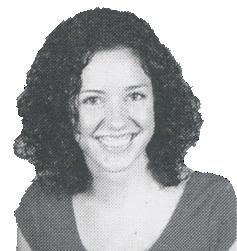
Michael Claxton
Jay Cline
Dan Freesmeyer
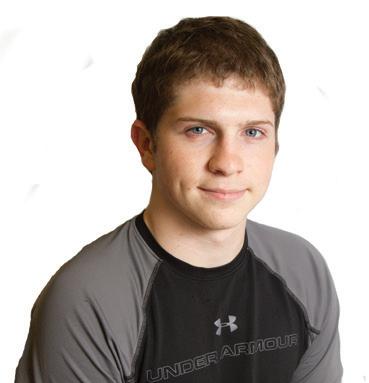
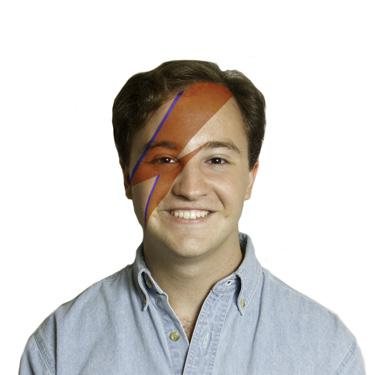
Amber Houston Davis Richardson
Chloe Savage
integrity, truth and open ears. However, we believe that meeting that goal is a two-way street between our staff and the public it serves. We pledge to keep our eyes and ears open to what our community has to say and hope that, in return, that community will be an interactive audience, sharing its stories with us. We also pledge to do the basics: Report accurate and relevant information, check our facts, and share them in a professional, timely manner. If you have any story ideas, questions, comments or concerns for the Bison staff, please email Alexis Hosticka, the editor-in-chief,
the Bison, it is our goal to serve the Harding University student body with
This is an opposing viewpoint to an opinion run by Alexis Hosticka on Oct. 24.
By 2021 in Seattle, the minimum wage will be $15 an hour. Employees will be paid at least $15 an hour to bag groceries, to flip burgers and to make coffee. These are jobs that almost any responsible adult (and most teenagers) can fill.
With such a large population of people available to take these positions, there is really no need to raise minimum wage by more than $5 an hour, or to more than 1.5 times its current $9.32. According to www.dol.gov, the current federal minimum wage is $7.25, but 23 states and Washington, D.C. all have minimum wages above the federal minimum wage. According to www.ncsl.org, “minimum wages will go up in nine states on Jan. 1, 2015 because of indexed increases in their state law.”
Multiple states have the minimum wage on the ballot for this election cycle, with many proponents of increasing it. In Arkansas, voters will have the opportunity to vote on Nov. 4 for a $2.25 minimum wage increase over the next four years, which would bring it to $8.50 in 2017.
Although this potential increase is small in comparison to Seattle, it still has an impact. There is no need to continue to increase the pay for expendable employees.
Many times the argument to raise minimum wage is so that workers can support their families, make a living and have higher quality of life. Although those ideas are good in theory, it is often not how a minimum wage raise plays out.
According to the Heritage Foundation, more than “half of minimum-wage earners are between the ages of 16 and 24.” This means that they are not working to support themselves but to earn income on the side while going to school or holding a job while looking for work in their desired career field. There is no need for them to be paid more for work that someone else could be doing.
In addition, when the minimum wage is raised, that money has to come from somewhere. This means that employers have to dish out more money, which means they must charge more for their goods and services. According to CATO, “A 2004 review of more than 20 minimum wage studies looking at price effects found that a 10 percent increase in the U.S. minimum wage raises food prices by up to four percent.”
In theory, the minimum wage employees should be able to afford more, but the prices just go up. If food prices go up four percent, other products and services are sure to increase in price as well. If prices are not increased, the other possible outcome of raising the minimum wage is job loss.
According to CATO, “a review of more than 100 minimum wage studies by David Neumark and William Wascher found that about two-thirds found negative employment effects.” When employers are forced to pay their employees more from the same budget they had before, they cannot hire as many employees or have them work as many hours.
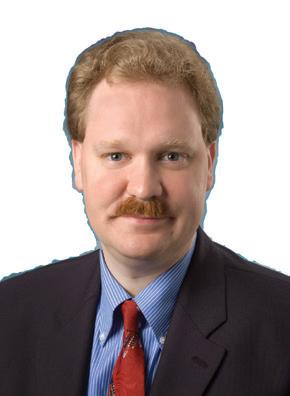
The average family income of a minimum-wage worker is $53,000 a year, less than the national average of $79,500 a year but well above the poverty level, according to the Heritage Foundation.
So no, working a minimum wage job won’t earn you the most glamorous lifestyle. But you’re also not working the most glamorous job. I’ve worked for minimum wage, and of course I would have loved to make more money but it isn’t logical or good for the economy.
Minimum wage jobs pay minimum wage for a reason: because the employees are easy to replace. I was a lifeguard, but the pool manager could have found 10 other lifeguards in 20 minutes if she tried.
There’s no need to continue to increase pay for jobs that continue to require the same amount of skill.
HOSTICKA
Iremember that sinking feeling in my gut like it was yesterday. Through all of the hustle and chaos of us getting there I had not had time to really process what was happening. Leading up to the trip, opportunities and challenges had been put before us, and following the training that I received from “Mama Dot,” they had been accepted as requests from God. We talked about having faith and prayed fervently for God to use us in this city with a great expectation to be witnesses to his power. However, as our translator walked away and I stood there looking out at the smog-enveloped city through our screened-in porch ... my vision zoomed out, my stomach sank and it felt like my shoulders gained 100 pounds as I realized the enormity of the situation. At that moment, I realized this wasn’t Harding anymore. I didn’t speak this language, didn’t have money or transportation, there was no U.S. Embassy to run to and I had just been handed what turned out to be a duplicate key to an apartment that school and government officials alike would
be able to come into at their pleasure. I was overwhelmed to say the least.
Looking back, I could easily write a book about God’s faithfulness through our time in Changsha, China and the journey that he brought us on. However, what I have been thinking about is the journey itself and how we had to step out on what faith we had in order for God to have room to show his faithfulness, therefore emboldening us to continue to step out even farther. We use terms like “Christian” and “people of faith” to describe ourselves, but what has always convicted me in Acts 11:26 is that those Christians did not hold a meeting or vote to determine what their movement would be called. They didn’t have church stickers or signage made to let the world know who they were. They weren’t defined as a tribe or by a set of traditions... others knew who they were because of their actions. Others looked at these believers and called them “Christians” because they heard them talking about Jesus and the Good News, but more than that, they saw them following the teachings of Jesus Christ. Despite persecution or the enormity of the situation, these early believers walked by faith in a way that got them branded as “Christians”.
As I look around at the challenges I face in life and ministry, both from within and without, I know I would be tempted to shrink back into what is comfortable and safe if I
was alone in this journey. Yet even now, as I think about what is comfortable, I can’t help but acknowledge that it feels that way because at one time I was willing to step out on faith and God proved faithful to sustain me. We sing songs about how our hope, protection, and very lives start and end in God, but are we walking that way? Are we looking at His will and following His lead even though we don’t have all the answers? Are we talking to people and living among them in such a way that gets us labeled as Christians without having to have that awkward “big reveal” that they never saw coming? Lately I’ve been convicted to process my discipleship and I know my time at Harding under the tutelage of men like Monte Cox, Bill Richardson and Evertt Huffard played a huge role in jumpstarting this journey, and for that I am so very grateful. So, I want to challenge you as well. As you flash back and think about what has happened during your time at Harding, take some time to look at what God is calling you to do and how you can step out on faith today and begin the journey that God has in store for you. He can take you farther and do more through you than you ever imagined possible.
On this Homecoming day I’m delighted to say
It’s a happy occasion, not solemn.
But when we all scream for our brave football team,
There’s the question of what we should call ‘em. This puzzle becomes (for all Harding alums—
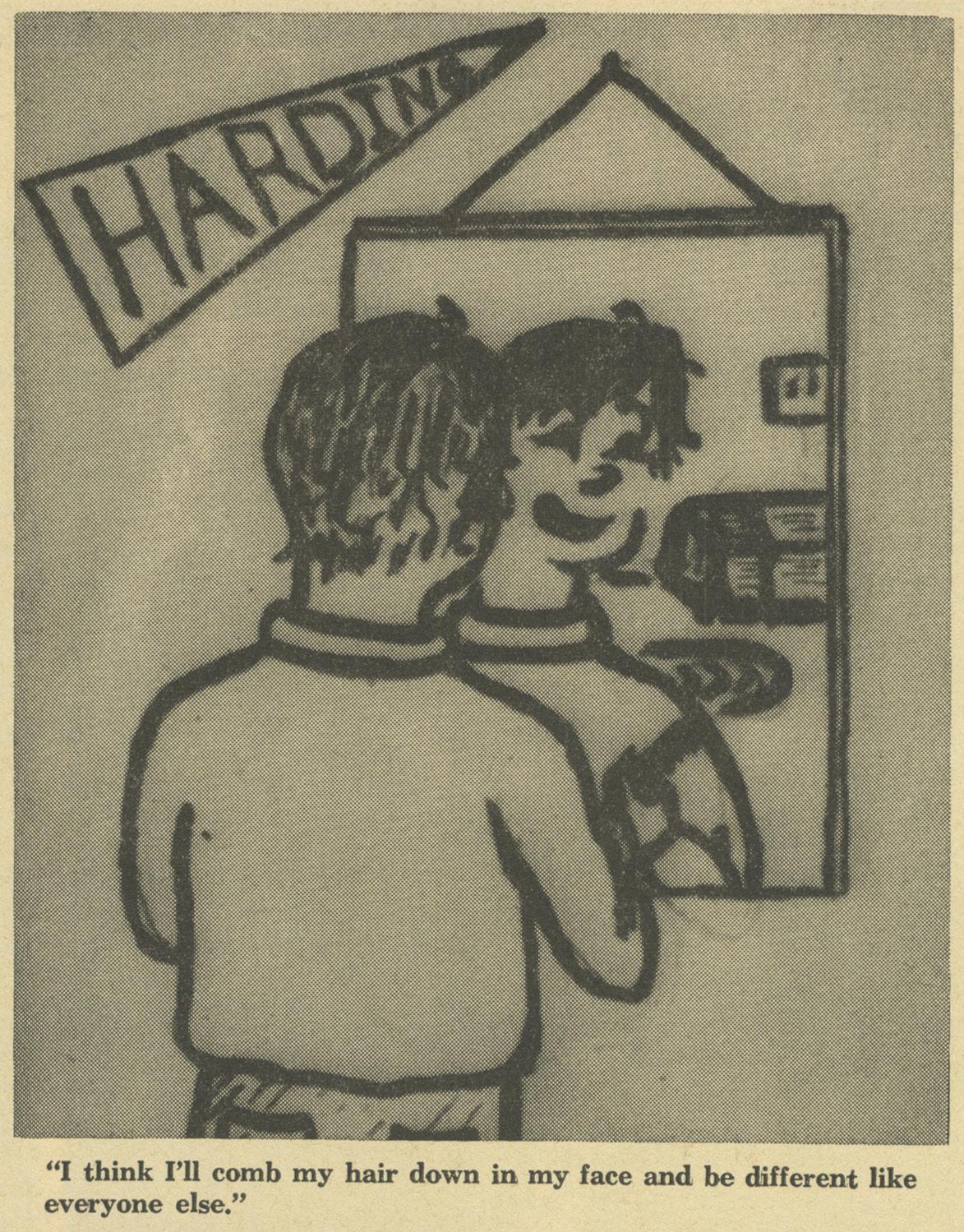
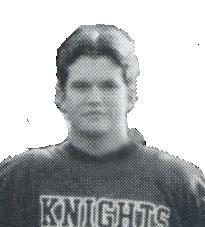
Whether city or country or rural—)
Is it the same if we roar for one Bison or four?
‘Cause our mascot is already plural.
We English professors have few bigger stressors
Than nitpicky questions of grammar;
The rules for the comma are loaded with trauma,
And pronouns can cause us to stammer. Our school slogans read, “Go Bisons,” indeed, And we’re all of us proud of the name. But what do we do, since one Bison or two Is supposed to be spelled just the same?
Though someone might guess that apostrophe S Would neatly make Bison’s from Bison,
I say anyone who makes this grammar boo-boo
I will lock in a cage and put mice in.
And so my dear friends, a whole lot depends
On just how well we sort out this mess, Since our trademark sports gear and each popular cheer All contain a superfluous S.
I can’t stress enough that this choice is not fluff, Not a bet that we just roll the dice on.
It is no piece of cake; there is too much at stake With the pluralization of Bison.
Now let me explain, it won’t do to complain
That grammatical rules are obtuse.
There are quite a few words, whether singles or herds, Spelled the same, such as deer, shrimp or moose.
It doesn’t make sense; it is crazy-intense
To have plurals confusing our chants.
Some words end in S, though their singular-ness
Is certain (like scissors and pants).
So clearly my dears when we yell out our
cheers
This is something we need much advice on.
I’ll admit it’s a fright; it just doesn’t sound right
To stand up and holler “Go Bison.”
Now I have been told, by a colleague of old
That my thinking is totally wrong.
My Bisonic quibble, he wrote with a scribble, Is hardly grammatically strong.
Proper names, he explained, cannot be constrained, By the same old persnickety rules. And those who think twice on the “s” on our Bison Are simply behaving like mules.
“For example,” he smiled, “Take a couple named Child.
They’re the Childs, not the Children, you see.”
And so went our riff, but according to Cliff, On “Bisons” we all should agree.
And yet I do fear the traditional ear
Will find “Bisons” an awkward sensation.
Thus now you will see how much stress it can be
Attempting Bisonification.
And so I come back with a plan of attack
To solve once and forever this crisis.
Please don’t be distressed if I deign to suggest, Could the plural of Bison be Bises? Whatever we do for one player or two We certainly want to be wise.
So will it cause grief if we try to be brief
And shorten our nickname to Bise?
Of course we could try the process whereby The plural of goose becomes geese.
But I’m fearful it may be quite awkward to say That our mascot is Buff the Biseese.
Or how ‘bout this topic, and don’t be myopic Retaining that plank in your own eye. Since it would be cool as a technical rule
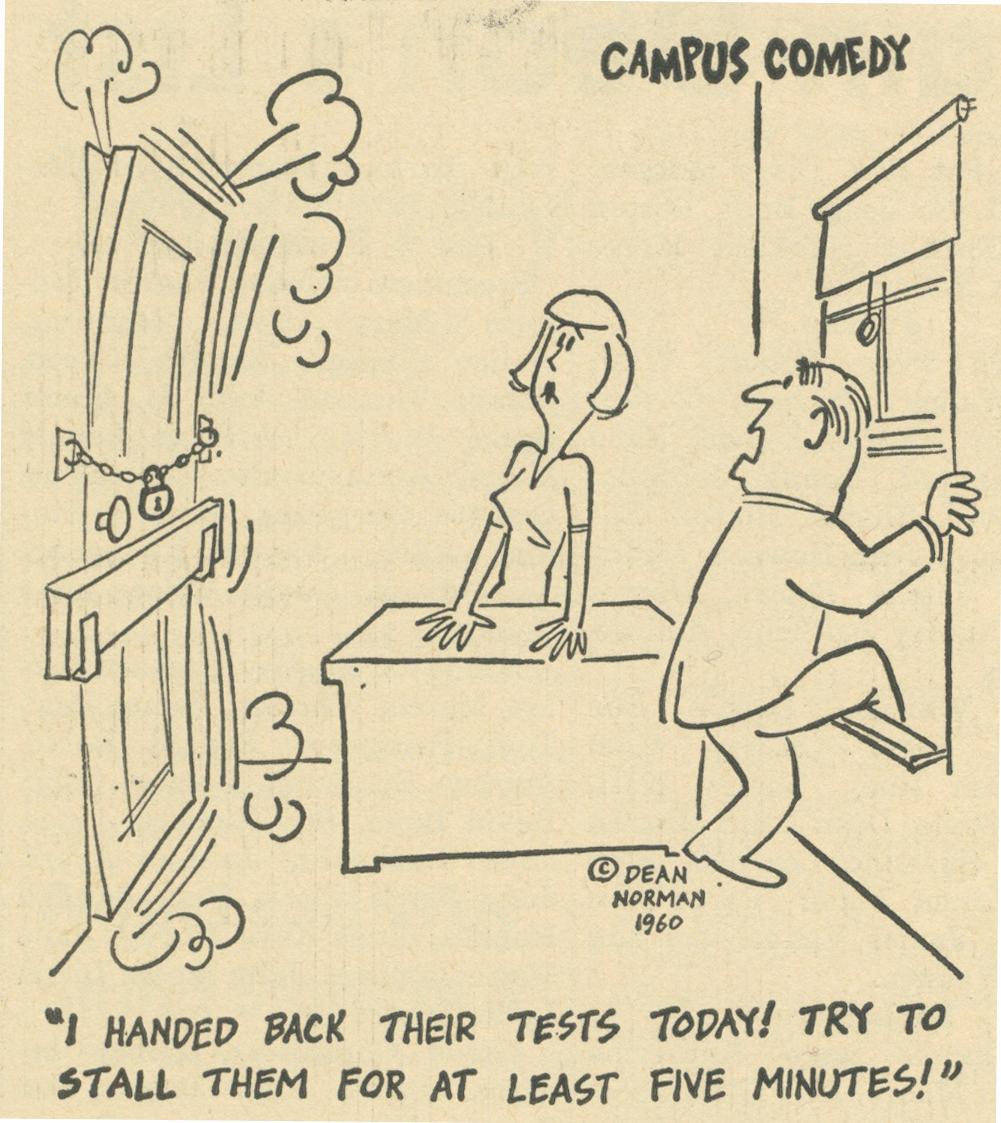
To call us the Fighting Bisoni.
Yes I realize it shocks to think outside the box, But sometimes it can be a bonus.
So maybe we’ll dare try a slight Spanish flair
And greet our team “Hola Bisones!”
Now we could take a cue from a word in Hebrew,
When you take a sweet cherub and clone him—
As an angel to spare makes a cherubim pair, Our players could be the Bisonim.
Now this one might fizzle, or perhaps truly sizzle,
The same way that piping hot grease does. Will our foes quake in fear as they put on their gear
To confront the HU Bisonistas?
Now please do not pout, since we cannot rule out
“Go Buffalo”—won’t that be fun?
But this name will not do ‘cause that word’s plural, too,
Which brings us right back to square one. We’re now losing ground; my head’s starting to pound.
It is something I must put some ice on, I just cannot rest before solving this quest To decide between Bisons and Bison. I’ve got it! Look here for the ultimate cheer, For the fans this will really entice ‘em.
If our voices do swell with the Latinate yell, “Let’s go Harding! E Pluribus Bisum!” This is an expanded version of a column that originally ran on November 5, 2010.
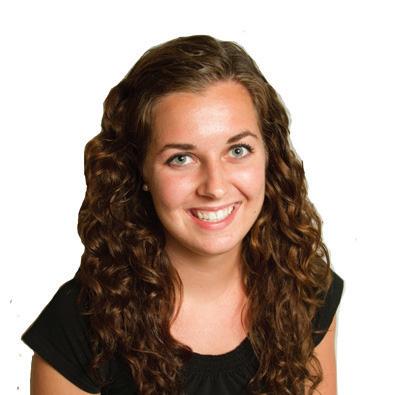
For the Homecoming production
“Shrek The Musical,” senior James Morgan undergoes a tremendous make over. Complete with latex prosthetics and a padded suit, Morgan becomes Shrek the ogre.
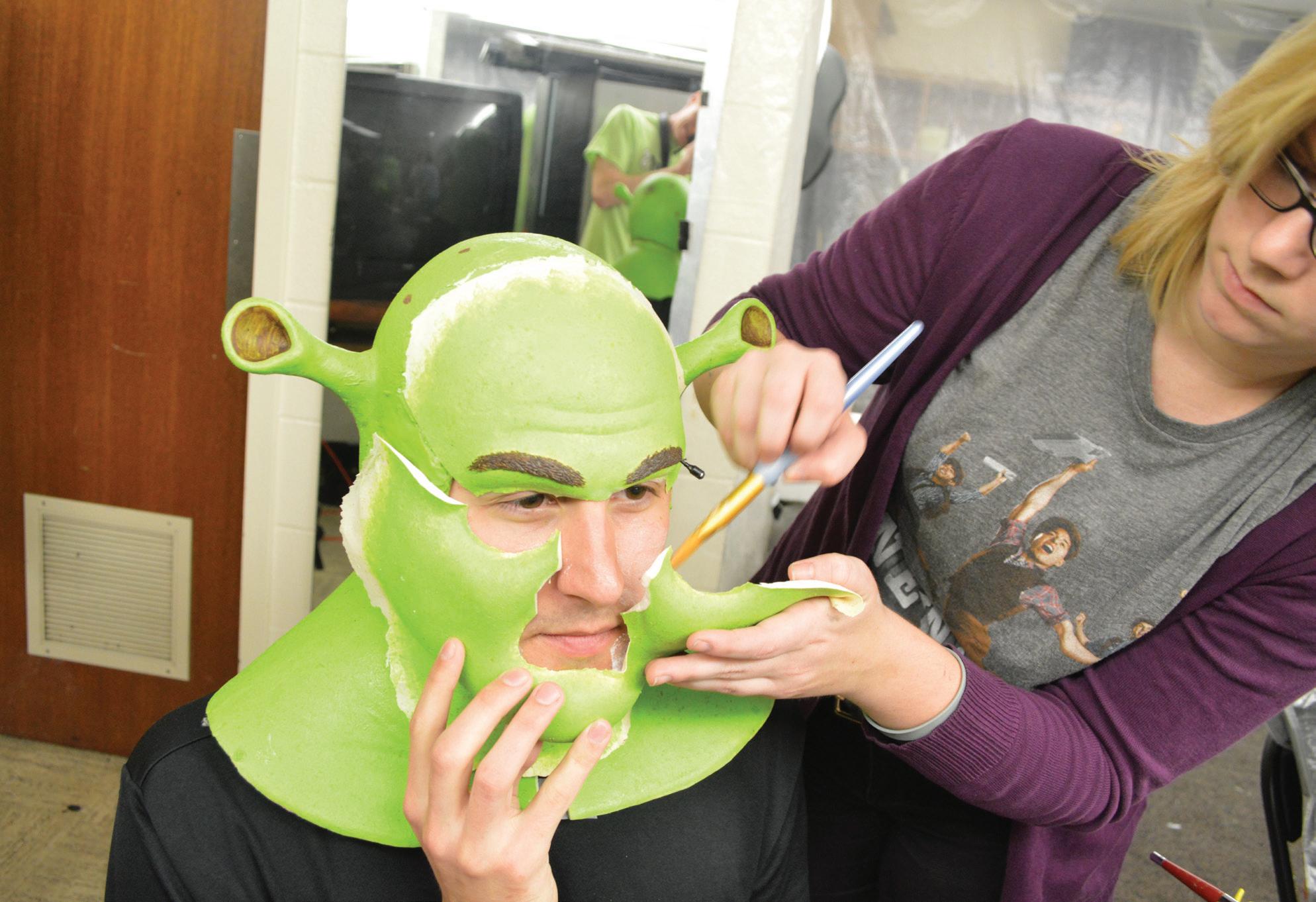

“It takes about thirty minutes to an hour to put it all on,” Morgan said. “The face is broken into three pieces including the forehead, the nose and parts of my face.”
The transformation starts with the cowl: a full headpiece that leaves nothing but Morgan’s face visible.
“We buy a one size fits all, so that’s why we have to cut (the cowl), because my face is pointy,” Morgan said. “The guy literally said, ‘your nose is really big.’”
The prosthetics are purchased premade
by the theatre department. Once in place, adhesive i s applied to Morgan’s forehead to begin the prosthetic attachments. Morgan said that once the cowl is in place, his ability to turn his neck virtually goes away.
“I can turn as far as my body goes,” Morgan said.
Sophomore Emily Ann Braziel is the head makeup artist for “Shrek the Musical” and applies makeup to Morgan before every show.
“The mask breaks apart from the adhesive, so we use new prosthetics every show,” Braziel said. “We were taught to do touch ups on the mask and cowl between breaks.”
The only other character who requires prosthetics in the show is the witch, played by sophomore Janet Jones. According
to Morgan, a musical that requires the main character to be a singer who is also wearing prosthetics is tough because blocked nasal cavities and a restricted mouth can affect the sound of the voice.
“The (new) nose is big enough to where it doesn’t press down anymore,” Morgan said. “The original was constricting my nasal passage and it actually screwed up my singing which is quite frustrating.”
After the four pieces have been attached, Braziel then uses a spackle that dries clear on the cracks and unsmooth surfaces to secure all of the pieces together. Following the spackle, she uses a mix of green paint and adhesive to apply the finishing touches to the mask.
Check out thelink.harding.edu this weekend for a video of the process from Alex Valdes.
By Rebecca Neely Head Web EditorThe President’s Council was created in the 1960s by Chancellor Emeritus Dr. Clifton Ganus. The purpose of forming the council was to create a circle of people who had a passion for Harding and its mission.
To be on the council, the members contribute to the university at a certain level. The council now has more than 1,200 members. The Council provides an avenue for people to express their support to students and to the university.
“Historically the president will solicit the President’s Council members on various issues,” assistant vice president for advancement Steve Lake said. “The Council members do this through online polling, focus groups, etc. The President’s Council doesn’t make any decisions, but they do have the opportunity to offer feedback and suggestions for the President.”
The President’s Council offers four levels of giving that are named after the previous university presidents, ranging from $600 to $10,000 annually.
Harding gives away approximately $26 million in scholarships each year with the Harding Fund. To offset this gift to students, the advancement office works to raise $2-3 million.
“It was evident that Harding made a difference in lives on campus and this continued even after graduation,” President’s Council member Pat Rice said. “It was Christian
lifestyles and education that you wanted to support financially. As a friend once said, ‘I f you don’t, who will?’” The advancement office has different categories in which they raise money for the university.
To show appreciation to donors, Generation HU and the Advancement office have created “Say Thanks Day” which takes place every spring semester. This is an opportunity for students to not only thank donors but to also make students aware of the blessings they do not realize they are receiving.
“I chose to be a part of the President’s Council because Harding has given me so much and I wanted to give back,” senior Jake Tansey said. “I have been awarded scholarships and opportunities that have helped me succeed, and none of these would have been possible without the gifts from the President’s Council members. Getting involved early as a student or young alumni will keep our Harding family strong and connected for years to come.”
The only buildings on campus that students contribute to financially are the dorms.
Lake said that Sarah Bobo, the young alumni associate, is working on developing a program to find young alums who will continue to stay connected with their graduating classes. They will volunteer to engage with their classmates to include giving and continued engagement with the Harding community.
performance of ‘Peter Pan,’ and I remember going but not this happening,” Stokes said. “I said to my mom, ‘Why am I not up there?’ and the next spring I tried out for ‘Wizard of Oz’ and was in the show.”



This is Stokes’ first time to have a lead role in a musical. Although she was a Spring Sing hostess last spring, this part is completely different because of the nature of the performance.
In Spring Sing, Stokes said she was able to be herself and did not have to portray any other character or personality, but obviously being in “Shrek The Musical” requires a totally different
like you can studying for a quiz or something,” Stokes said. “I have to spend some time on it everyday. Like memorizing lines; you have to keep doing it everyday.” Stokes was also able to learn new skills from this production.
“I got to learn how to tap dance and it’s so fun,” Stokes said. “When I was little, I was fascinated with tap dancing, but you just have to learn the basics and then it’s not too hard from there.”
Overall, Stokes said “Shrek The Musical” has been one of her favorite shows that she has taken part in. Her favorite performance so far has been when she was in “Joseph and the Amazing
Illustrations by JEWELYA WILLIAMSThis weekend on campus, Chancellor Dr. David Burks will be debuting his new book, Camaraderie, to the Harding family, as well as signing copies in the Harding Bookstore. The book details the last 26 years of Harding history and experiences during his presidency at Harding.
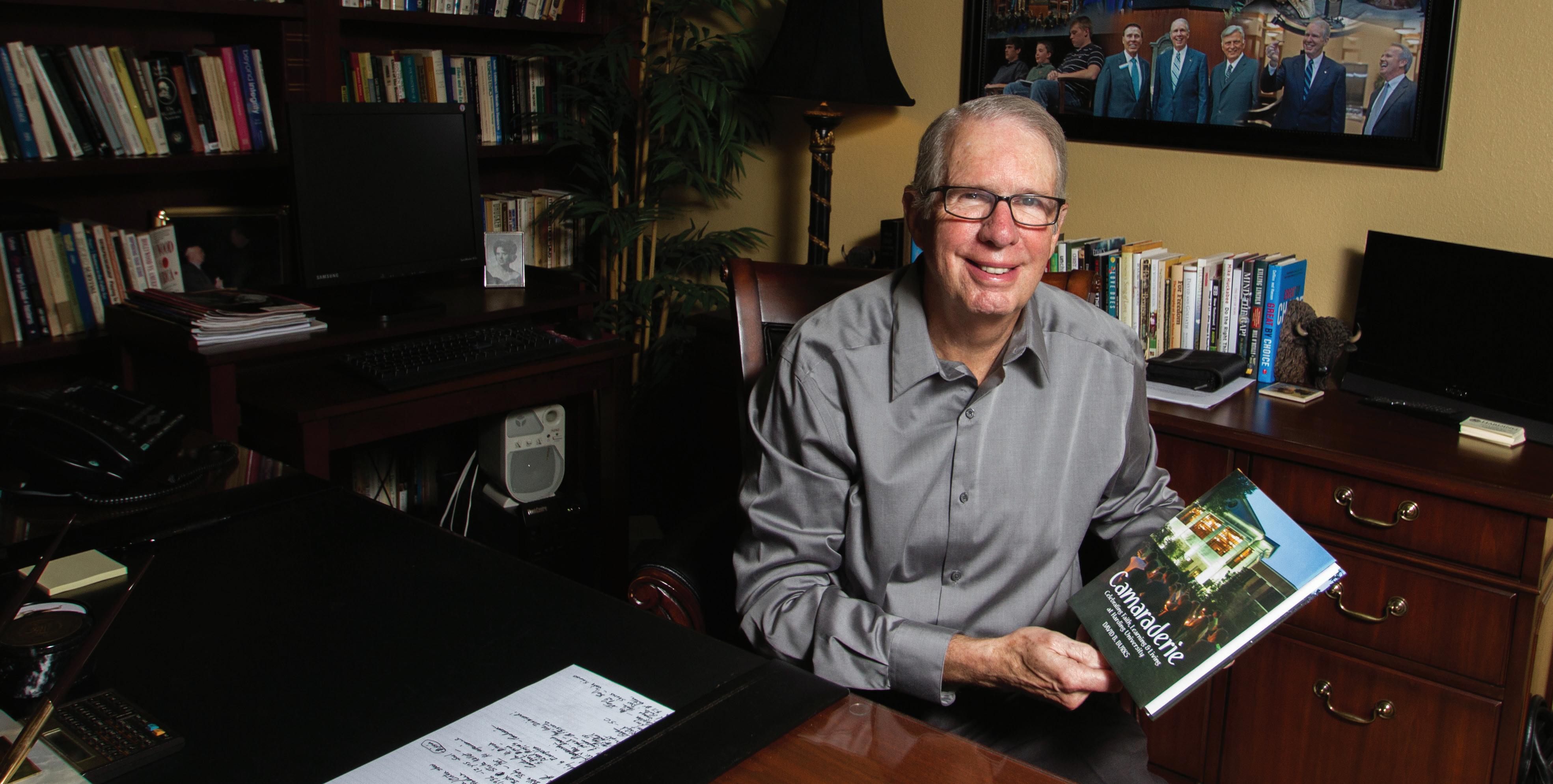
During Burks’ final year as president, he led several chapels sharing some of his favorite things about his time at Harding, including stories about students, special guests and campus events. After sharing these stories in chapel, several students and faculty members approached Burks and suggested that he compile them into a book about his
time as president.
In the fall of 2013, Burks and his student assistant, Will Waldron, began the research process to write what had been an outline Burks had been working on for almost 5 years. By the fall of the following year, the completed book had become an expansive and detailed account of his presidential career.
“It was a huge job, a much bigger job than you ever think it’s going to be,” Burks said. “I used the annual President’s Reports as my primary source, and then I went to the Bison, Petit Jean and Harding magazine and clipped out articles that dealt with the stories I wanted to tell.”
Beyond all of the primary sources of information he found, Burks also wrote to
faculty members, alumni, student leaders and administrators asking them to share some of their favorite stories about their Harding experience.
“Although there is a lot of Harding history detailed in the book, it is more of an effort to highlight stories as to why we celebrate the mission of Harding,” Burks said.
In addition to the research accomplished by Burks and Waldron, an advisory committee was formed primarily of Burks’ presidential cabinet to help guide the forming of topics and chapters to be covered in Camaraderie. Burks said that having the committee helped to make sure that he touched on a wide variety of subjects and stories that would truly capture a snapshot of every angle of Harding life.
Harding University will celebrate its 90th Homecoming this weekend. Throughout the years that Harding has been in existence, only five men have reigned as president of the university.
Harding College was formed from students of Harper College and Arkansas Christian College. The two colleges merged in 1924, creating Harding College, located in Morrilton, Ark. J.N. Armstrong was chosen to become president of the college because of his many years of service as president of Christian colleges. Armstrong decided to name the college in honor of his father-in-law, James A. Harding. Harding College moved to Searcy after purchasing the property from Galloway Women’s College in 1934 for $75,000.
In 1936, J.N. Armstrong wrote a letter to George S. Benson asking him to assume the presidency of Harding because Armstrong felt that Benson could raise the funds needed to make Harding successful. Benson raised enough to pay off the mortgage just three years into his presidency.
“The work of paying off the mortgage was a combined effort of J.N. Armstrong and Dr. Benson along with a committed faculty and donations,” Debbie Howard, Women for Harding president said. “From what I have read, Dr. Benson was most definitely good at fundraising. He certainly played a huge role in eliminating Harding of her debt, and once the debt was paid off, I can only imagine what a tremendous relief it was. Now the leadership and faculty could rest a bit easier. To have sustained the college during the Depression and to have been able to secure donations from people miles away was quite an accomplishment.”
Under Benson’s administration, Godden Hall was replaced with the Administration Auditorium and Harding College received accreditation. Benson continued to serve until 1965 when Dr. Clifton Ganus, Jr. began his presidency of Harding College. Ganus brought a new and exciting agenda to the college. In 1979, Harding College became
Graphic by Jewelya Williamsa university because of immense growth. In 1980, Harding University sent the first class to Harding University in Florence, Italy. The Walton Scholar Program also began in 1985 under the Ganus administration, allowing students from Latin American countries to experience the Christian education that Harding offers.
“I think this is a great opportunity for these students who may not experience this kind of quality education elsewhere,” Chancellor Emeritus C.L. Ganus, Jr. said. “The Walton Scholar Program has given them a chance to experience freedom, democracy and free enterprise, and they can take what they have learned back to their home coun
tries, which was Sam Walton’s intention behind this program.”
Ganus became Chancellor of the university in 1987 when Dr. David B. Burks became the fourth president. Under the Burks administration, the study abroad programs at Harding grew immensely, sending 48 percent of graduating students abroad to seven campuses around the world and more than 40 countries.
During the Burks presidency, many buildings on campus were built and almost every building was renovated. Because of the increase in student enrollment, the university saw a need for more student housing. The Legacy Park construction project began in 2012. The apartment buildings in Legacy Park honor families who have had an influential role at the university. Burks became Chancellor in 2013 when he passed the key to the university to current president Dr. Bruce McLarty.
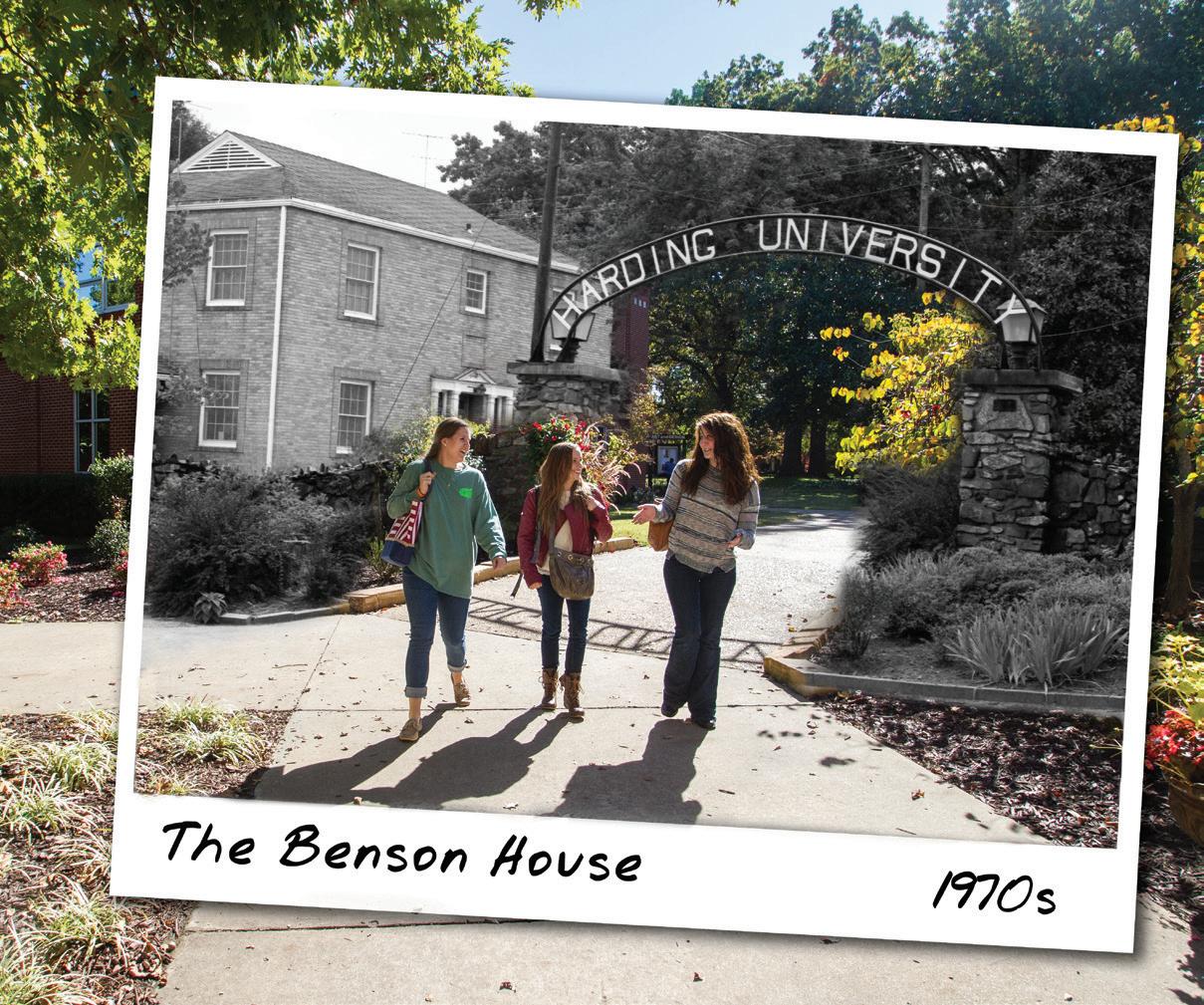
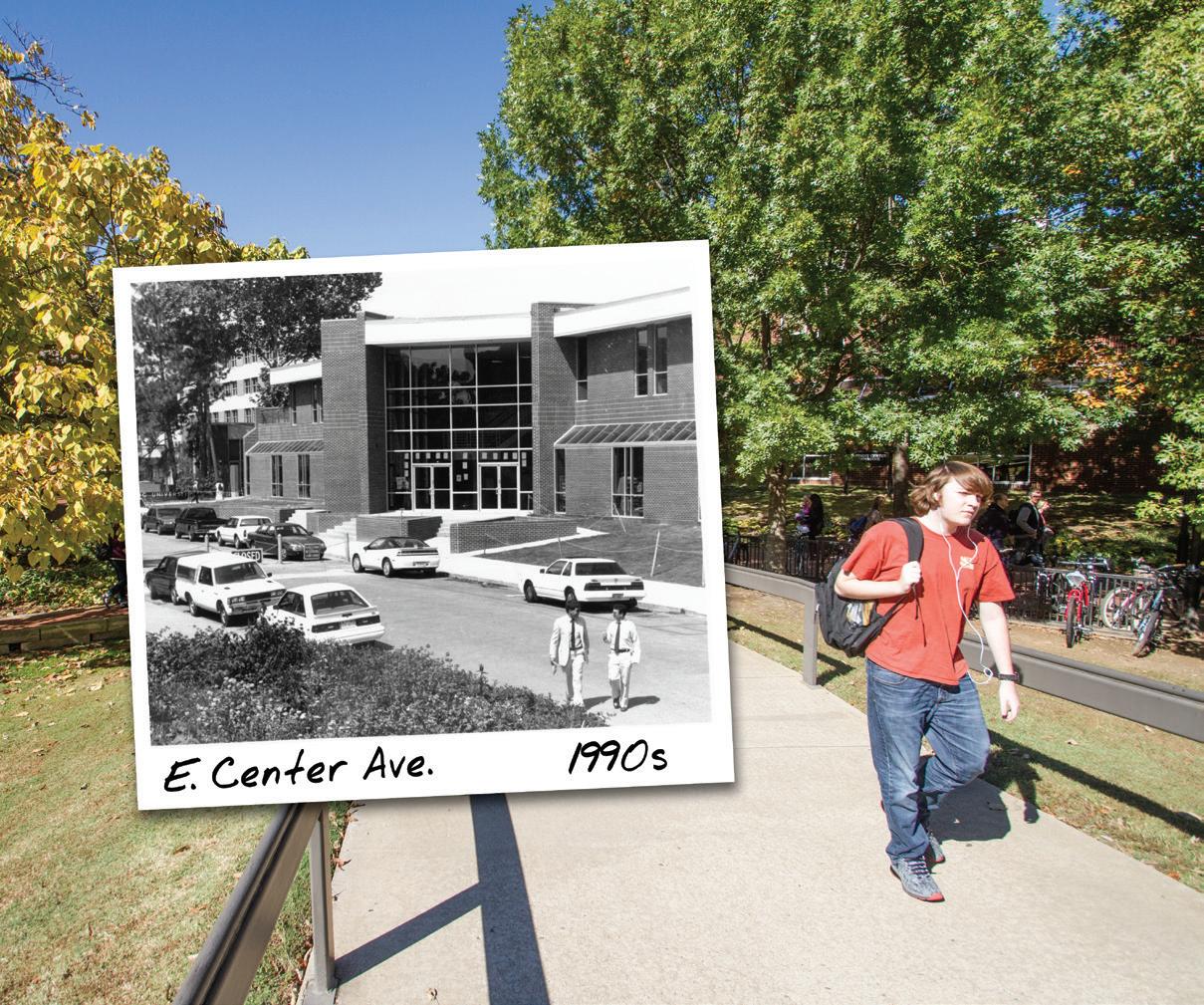
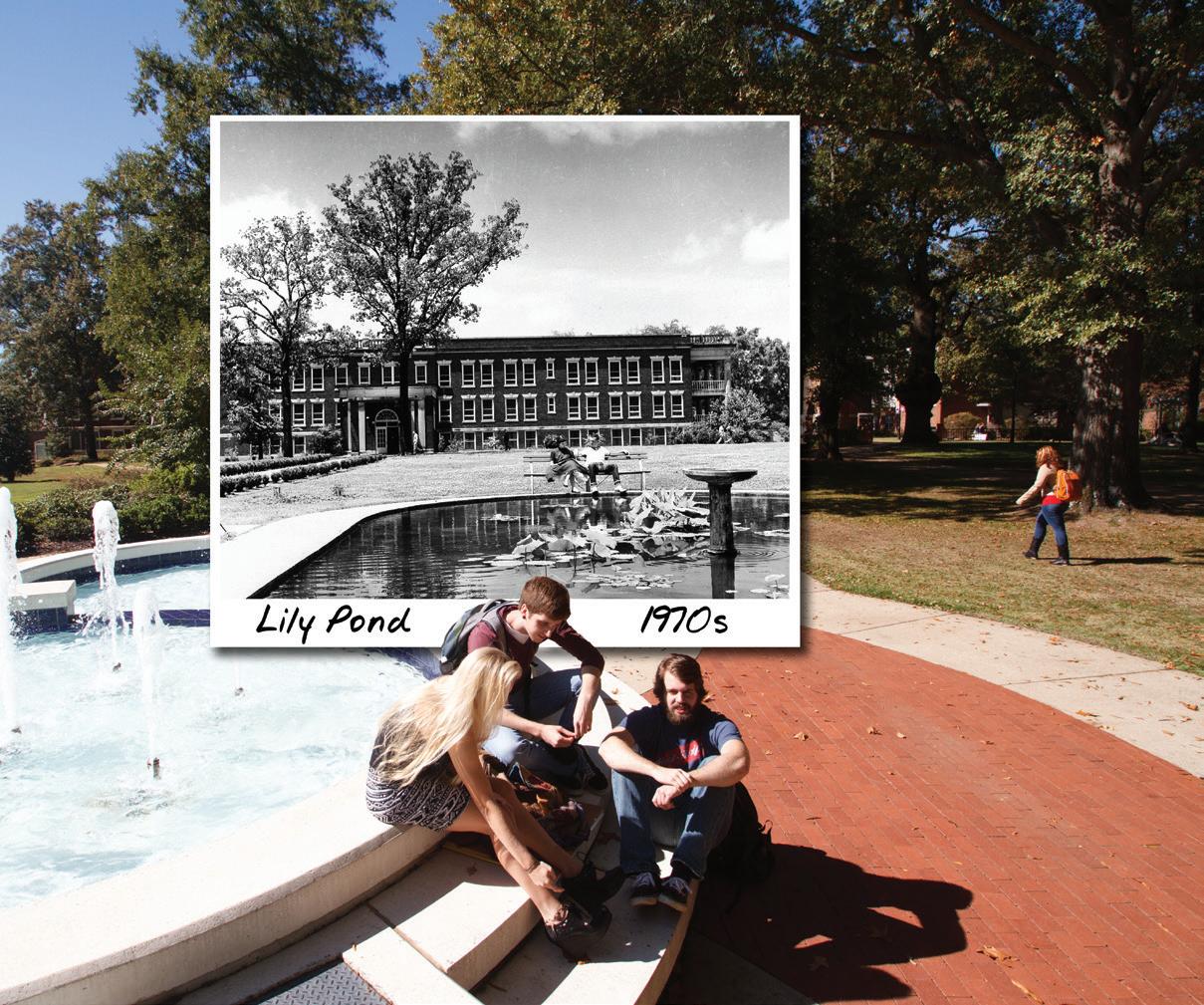
Since McLarty’s first year began, he has developed a university mission known as, “a community of mission.” McLarty is connected to the student body through Twitter and Instagram. Harding continues to grow and McLarty has predecessors to heed advice from.
If you have ever wondered which HU president you are most like, go to the Student Publications Facebook or Twitter accounts and follow the link to the online quiz.
The title of the book itself is a distinct remembrance for many of Burks’ presidency. According to Burks, he tried to steer away from using camaraderie as the title, fearing it would not connect with those outside of Harding. However, students and faculty members insisted he use it, as the word camaraderie was the key word he often used to describe the student body that he found so special.
“There were a lot of people I could have dedicated this book to, but I never had a second thought about feeling the book needed to be dedicated to the student body at Harding,” Burks said. “They encouraged me to write it, their stories are in the book and they are what make Harding important.”
Deanna Brooks, 1966
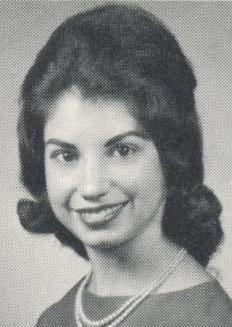
Foundation
Harding was founded in 1924 when Arkansas Christian College and Harper College merged. Harding was led by J.N. Armstrong, who had been president of Harper College for the previous five years.
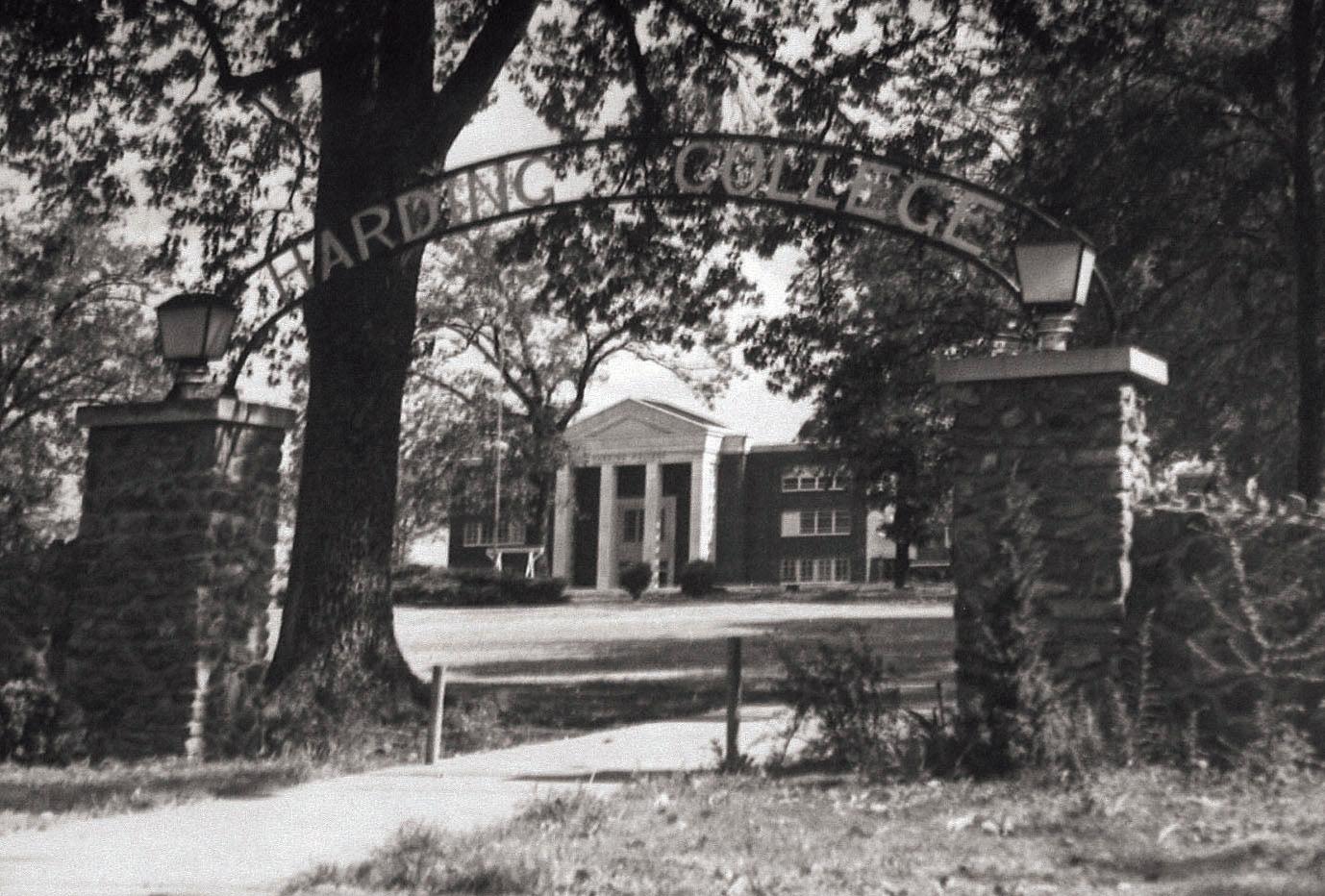
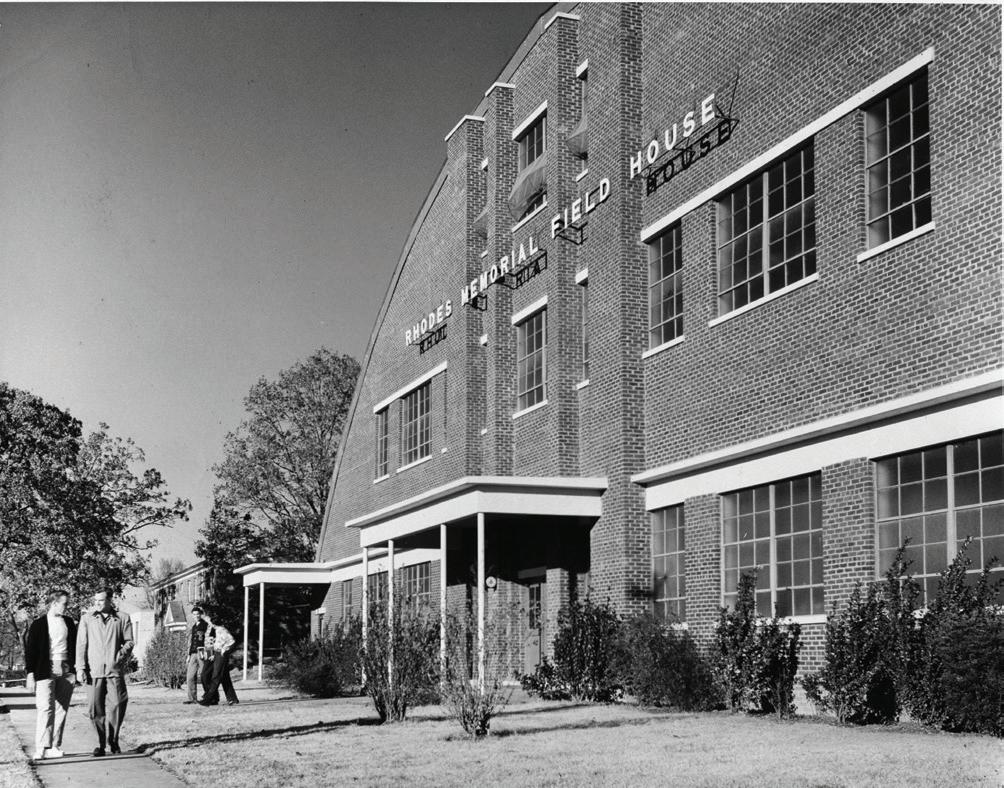
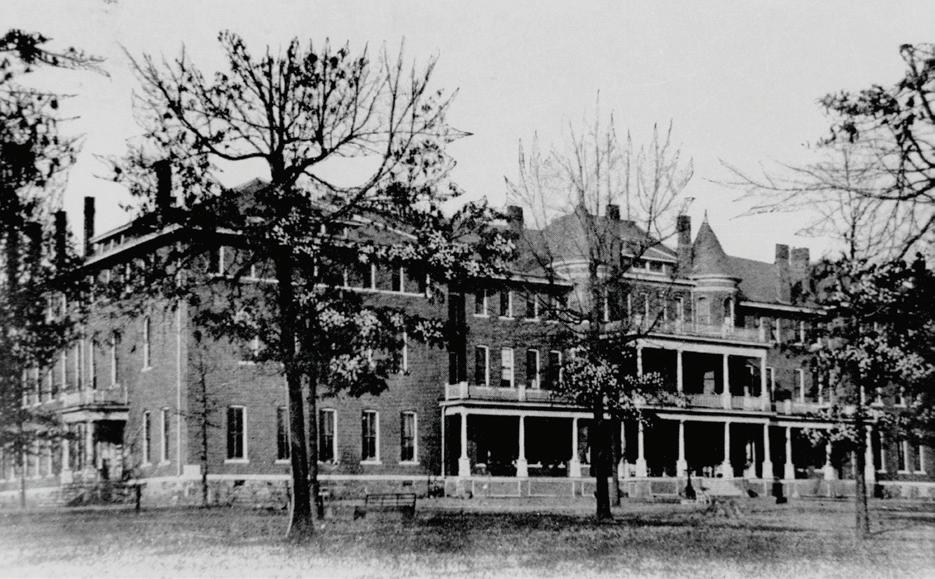
Spirit
The Rhodes Field House was built in 1948. The basketball court went on to be named the Best Road Trip Destination in College Basketball in 2013 and was featured on ESPN.
“Students sang while waiting to get into the cafeteria. The line often backed up to the Lily Pool and it was a fun time to visit. ‘At Harding, we sing’ was a motto known throughout the United States. Tuition was $18 per credit hour, and that included the tickets for sporting events and lyceums.”
Liz Howell, 1978
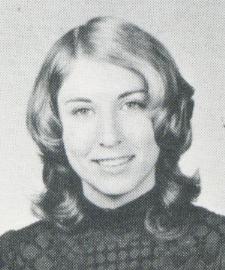
“Forty years have passed since I was a freshman, but remember the beauty of the front lawn and I still feel the same peacefulness as walk across campus today. There is a song that describes Harding very well, ‘There’s a sweet, sweet spirit in this place, and know it is the spirit of the Lord.’”
Ceremony
Going Abroad
International Programs expanded in 1994 to include campuses in Greece and England, and Australia in 1996. IP began in 1980 with a campus in Florence, Italy.
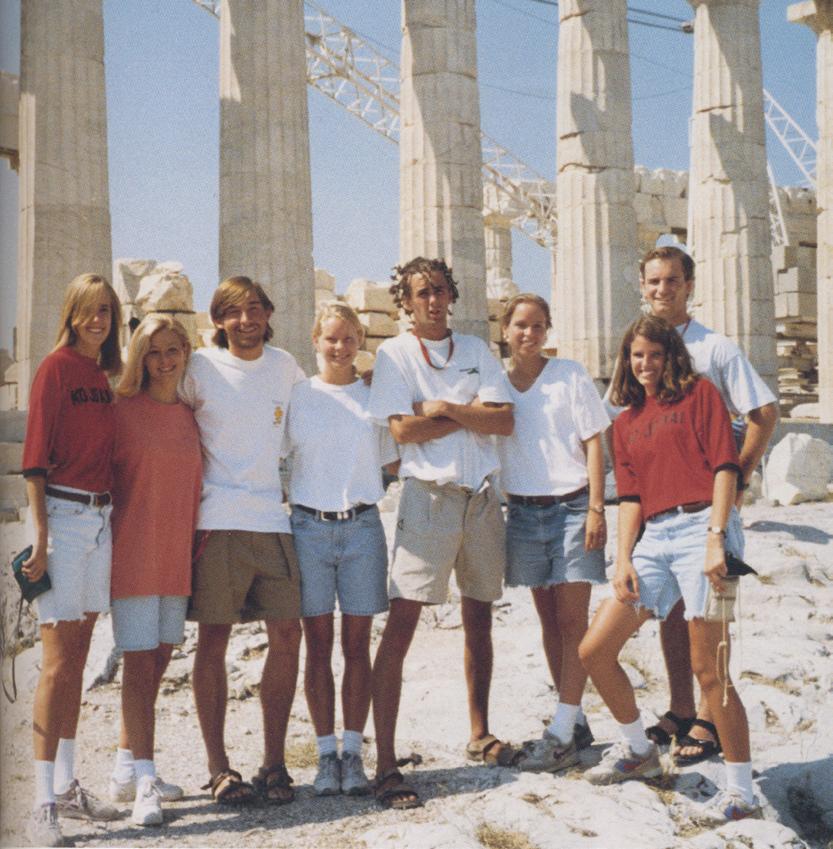
Dr. Bruce McLarty was inaugurated as Harding’s 5th president upon Dr. David Burks retirement after 27 years in office. The inauguration was held Sept. 20, 2013 and was attended by approximately 2,500 people.
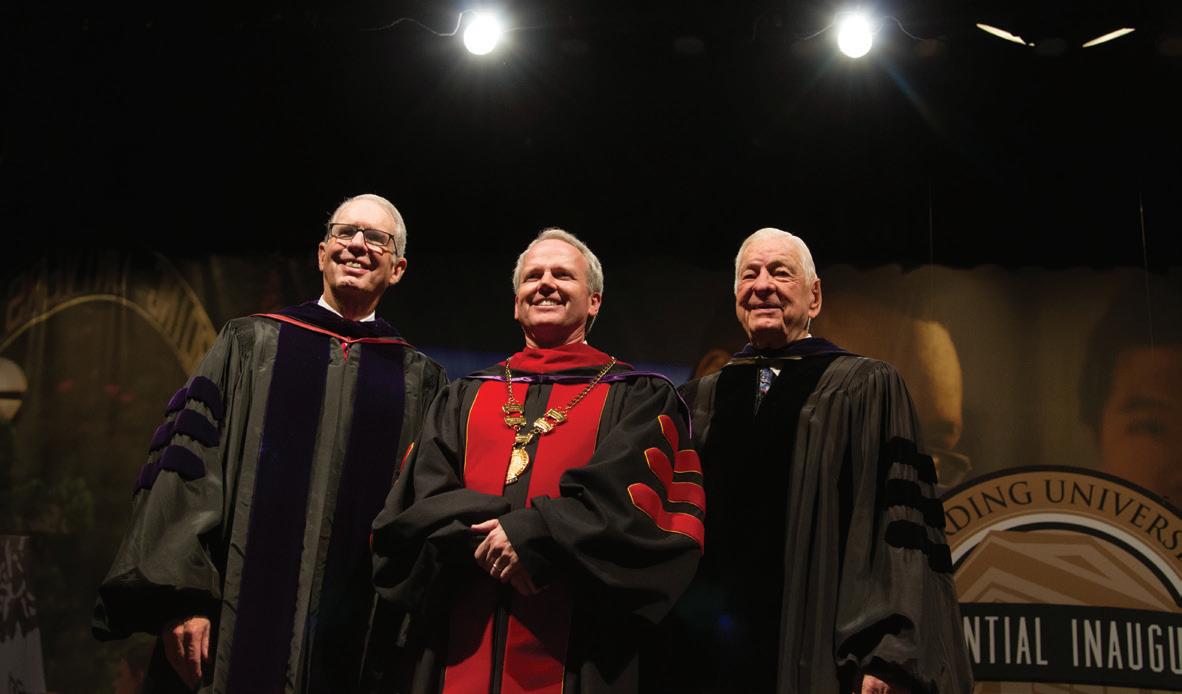
Lena Ruth Story, 1950
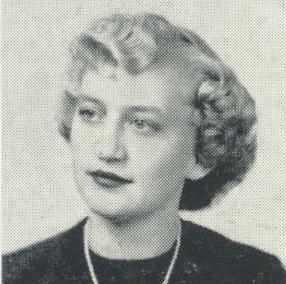
“I went to Harding when all the veterans came back. All the kids were friendly and the teachers were helpful and kind. There were restrictions, but they were for our benefit. We would go on trips on the weekends to football games or a movie like ‘Gone with the Wind.’”
Transition
Dr. George S. Benson took on the role of Harding’s second president in 1936. He went on to balance Harding’s budget and bring the school out of debt.
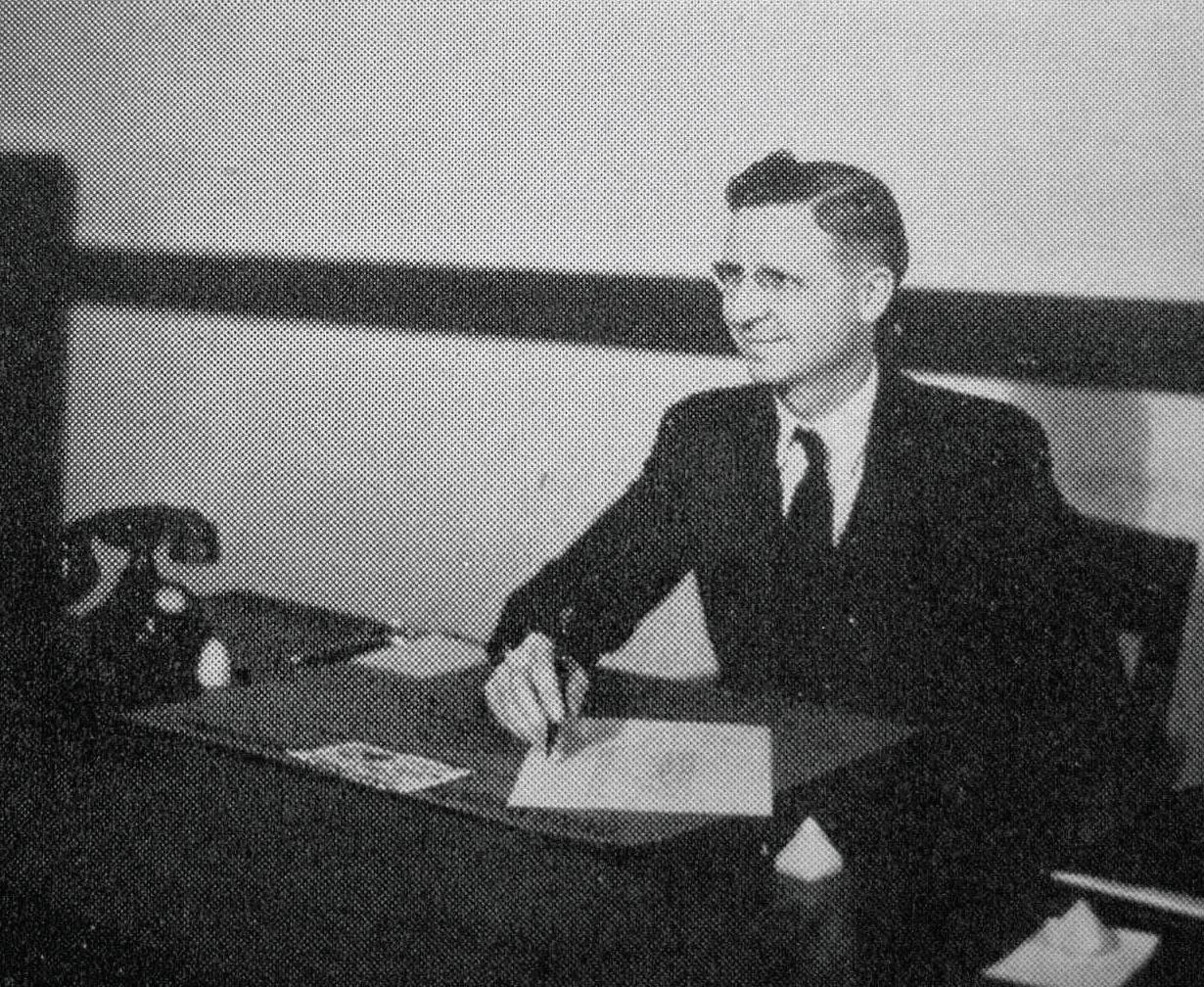
Accreditation
Harding’s status was changed from college to university in 1979. The change in classification added credibility and prestige to students’ degrees.
Bryan Burks, 1989
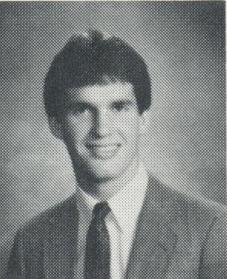
“I remember Friday night and Saturday morning club and intramural games. While both are still popular today, I think today’s students find other ways to show their value of friendships and great memories.”
Zack Neal, 2001
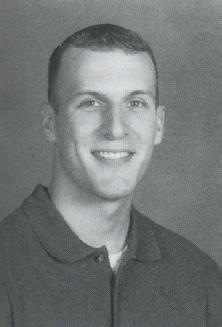
“We built relationships through functions, service projects, trips to Little Rock or the lake, time on the intramural field or court, cheering on the Bisons, midnight conversations in the dorms, spring break missions, study groups and devotionals on the Benson steps. What love about my Harding experience is that it is so similar to what I witness in students today.”
Expansion
From 2000-2013, campus grew exponentially. Harding built the Thornton Education building, Ulrey Performing Arts Center, Farrar Health Sciences building, Cone Hall, Shores Hall, Pryor Hall, Village and Legacy Park. Several buildings were renovated, including the Ganus, Ezell, student center, Charles White Dining Hall, American Heritage Center, Ganus Athletic Center, Olen Hendrix, Mabee, Harding Academy, Searcy Hall, Kendall Hall, Armstrong Hall, Grad Hall, Pattie Cobb Hall, Keller Hall, Cathcart Hall, Harbin Hall, Sears Hall, Stephens Hall and Allen Hall.

Shane Schock
Just when you thought there wasn’t or couldn’t be enough sports entertainment in October, the sports gods have squeezed one more in before the end of the month.
With the MLB wrapping up its season this past Wednesday, and the NFL and NCAA football seasons deep into the heart of their schedules, there is one sport I feel was over looked through all of this October sports madness.
The NBA kicked off the 2014-2015 season this past Tuesday with the ring ceremony of the defending 2013-2014 champion San Antonio Spurs, who had one of those “feel good” stories in the NBA last season on their way to a fifth NBA title.
This year, basketball has a ton of headlines to cover and keep an eye on throughout the season, mainly the “King of Cleveland,” Lebron James. As most of the sports world knows, James took his talents back to the streets of Ohio to play for his hometown team, the Cleveland Cavaliers. He has a lot of weight on his shoulders with a young team and a city hungry for their first NBA title in franchise history.
Chicago Bulls point guard Derek Rose has made headlines after his recent stint with the USA basketball team over the summer. On lookers noticed Rose seemed to be back to form after his knee injury two years ago. Rose to most, is the missing piece to the Bulls winning the eastern conference and going to the NBA finals for the first time since the Michael Jordan era. I believe he has looked like the dominant player I know he can be, and people of Chicago are already screaming “Rose for MVP,”
Out west, the L.A. Lakers have their Black Mamba back, Kobe Bryant. Bryant suffered an Achilles injury and missed most of the 2013-2014 NBA season. Unfortunately, Bryant is returning to a team that has minimal talent to say the least. Star Lakers point guard Steve Nash is out indefinitely with a back injury and has left Bryant by himself to lead a team of scrubs to a playoff run.
The NBA has so much to tell us over the next few months of the season, and personally, I feel the battle of the western conference is something to look forward to as the season progresses.
The Spurs, Thunder, Clippers, Mavericks, Warriors and the Trail Blazers are all teams I see fighting for the final spot in the western conference for a ticket to the big dance, the NBA Finals.
In the eastern conference, competition isn’t so heated. With the Lebron moving over to the Cavs and Rose back with the Bulls, I see it a two-man race to the 2015 Finals.
#SchockTalk
SHANE SCHOCK is sports editor for the 20142015 Bison. He may be contacted at sschock@harding.edu.
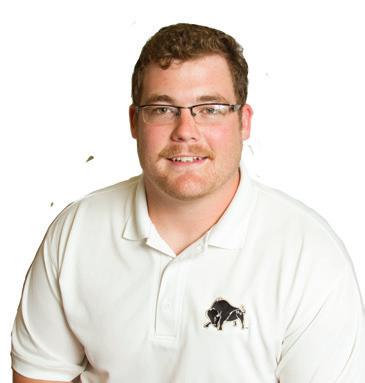
Twitter: @Shane_M_Schock
October 31, 2014
Vol. 90, No. 8
Homecoming games from the following years, listed clockwise: Petit Jean yearbook 1988; Petit Jean yearbook 1955; Public Relations archives 2010; Public Relations archives 2005; Petit Jean 1974; Public Relations archives 2002.
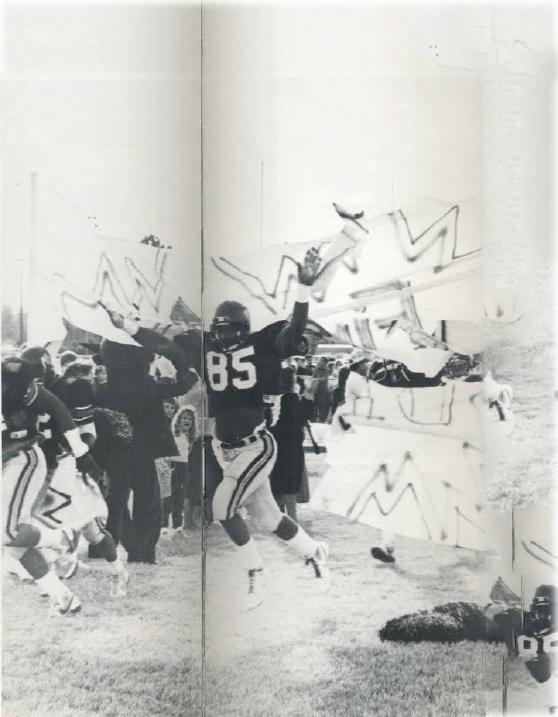 By Shane Schock Sports Editor
By Shane Schock Sports Editor
The Bisons (6-1) go up against Southeastern Oklahoma State University Storm (SEOSU) (5-3) at First Security Stadium, Saturday, Nov. 1. Southeastern comes into Searcy riding a four game winning streak and will look to spoil Harding’s Homecoming.

“Every chance to play is special, but we are very excited about playing in front of a homecoming crowd,” secondary coach Luke Tribble said. “There will be a lot of former Bisons in the crowd who haven’t watched us play in a while, and we always want to play in a way that makes those guys proud.”
Tribble said it will not be hard to get the team focused for this week’s game because not only is it Homecoming, but they are also playing a team that has found a groove winning four straight.
Harding is coming off of an emotional victory over Henderson State University who was ranked No. 4 in the AFCA poll at the time. The Bisons are looking to move forward and put up another good performance in front of the homecoming crowd.
you’ve just come off of such an emotional victory,” junior linebacker Jordan Cantrell said. “I think the defense has to treat this game like a playoff game, because ultimately that is what it is.”
Over the last two games the Bisons defense has competed against two quarterbacks who have thrown for more than 1,000 yards and 10-plus touchdowns. The story does not change this week as SEOSU quarterback, Ryan Polite, has thrown for 1,814 yards and 14 touchdowns so far through eight games.
“Southeastern is a great team despite their record. I mean two of the three losses were by six points or less,” Cantrell said. “They are very well balanced in both run and pass collectively, and we will need to play sound assignment football.”
Cantrell said they have an elusive quarterback and arguably one of the best running backs in the conference. Cantrell said they will be ready to play with unmatched pursuit and get the win in convincing fashion.
Harding’s offense faces a defense in SEOSU that is towards the bottom of the conference in total defense, ranking 8th out of 10 teams. They
Harding’s surpasses that with an average of 473.3 yards of total offense a game this year.
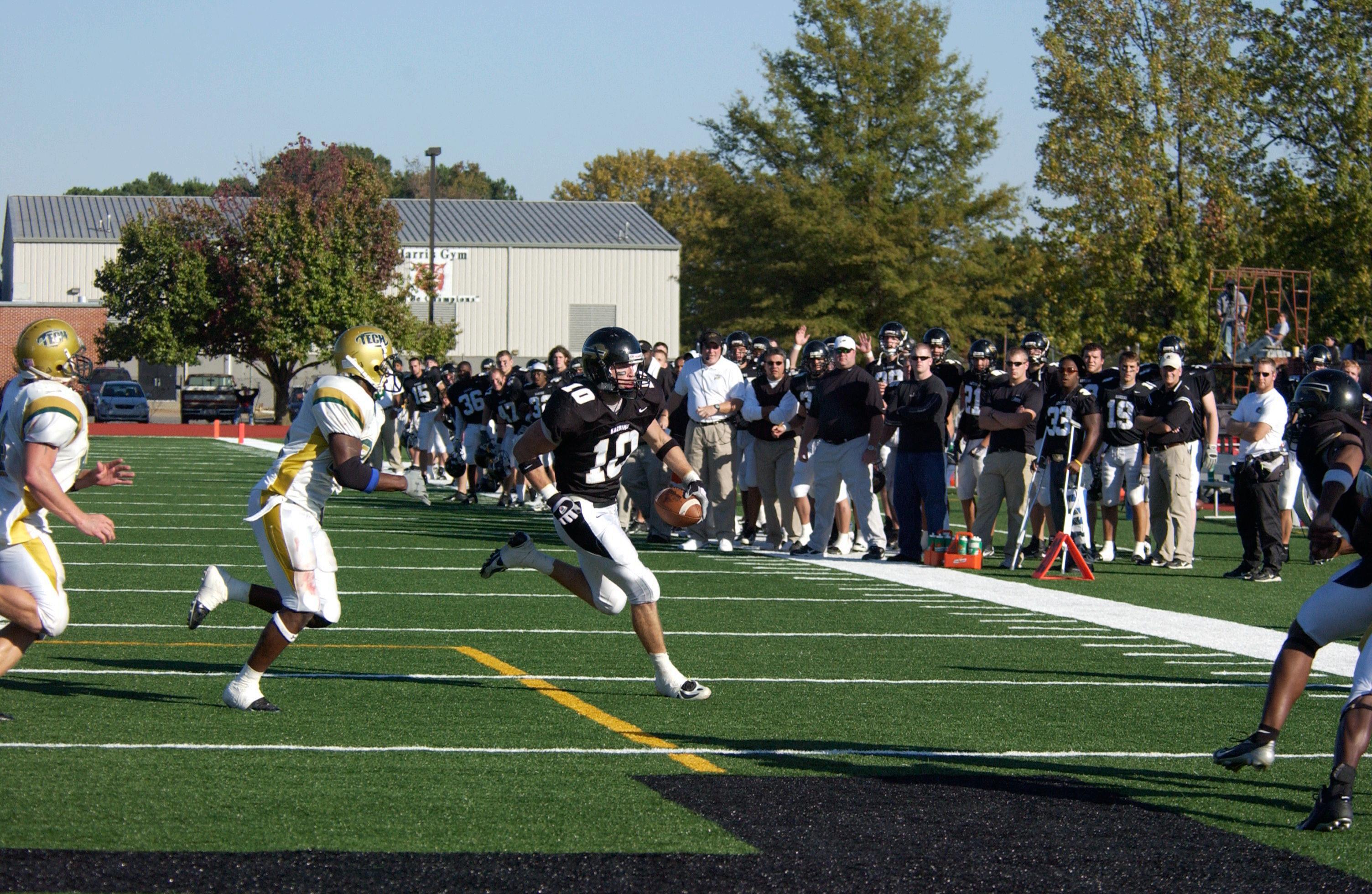
“We need to take it to them and play with a physical attitude like we have all season long,” senior Ahmad Scott said.
Scott said he personally needs to make sure he plays just as dominate without the ball as he does with it.
Last week Scott was named Great American Conference Special Teams Player of the Week with a 98-yard kick return against Henderson State, proving how vital all three phases of the game can be.
“I plan on continuing to be a factor on special teams along with my other teammates,” Scott said. “Special teams are a big influence in big games, and I think if we continue making it a positive factor, then we have a better chance of winning.”
The Bisons moved up in the AFCA poll from No. 23 to No. 17 and are ranked No. 9 in the DII NCAA regional rankings. The Bisons will need to be in the top six in the region to get a bid for the NCAA DII playoffs.
When it opened its doors in 1924, Harding University fielded a football team. For seven years they played, but in 1931, due to budget restrictions, athletics as a whole were cut in order to save money.
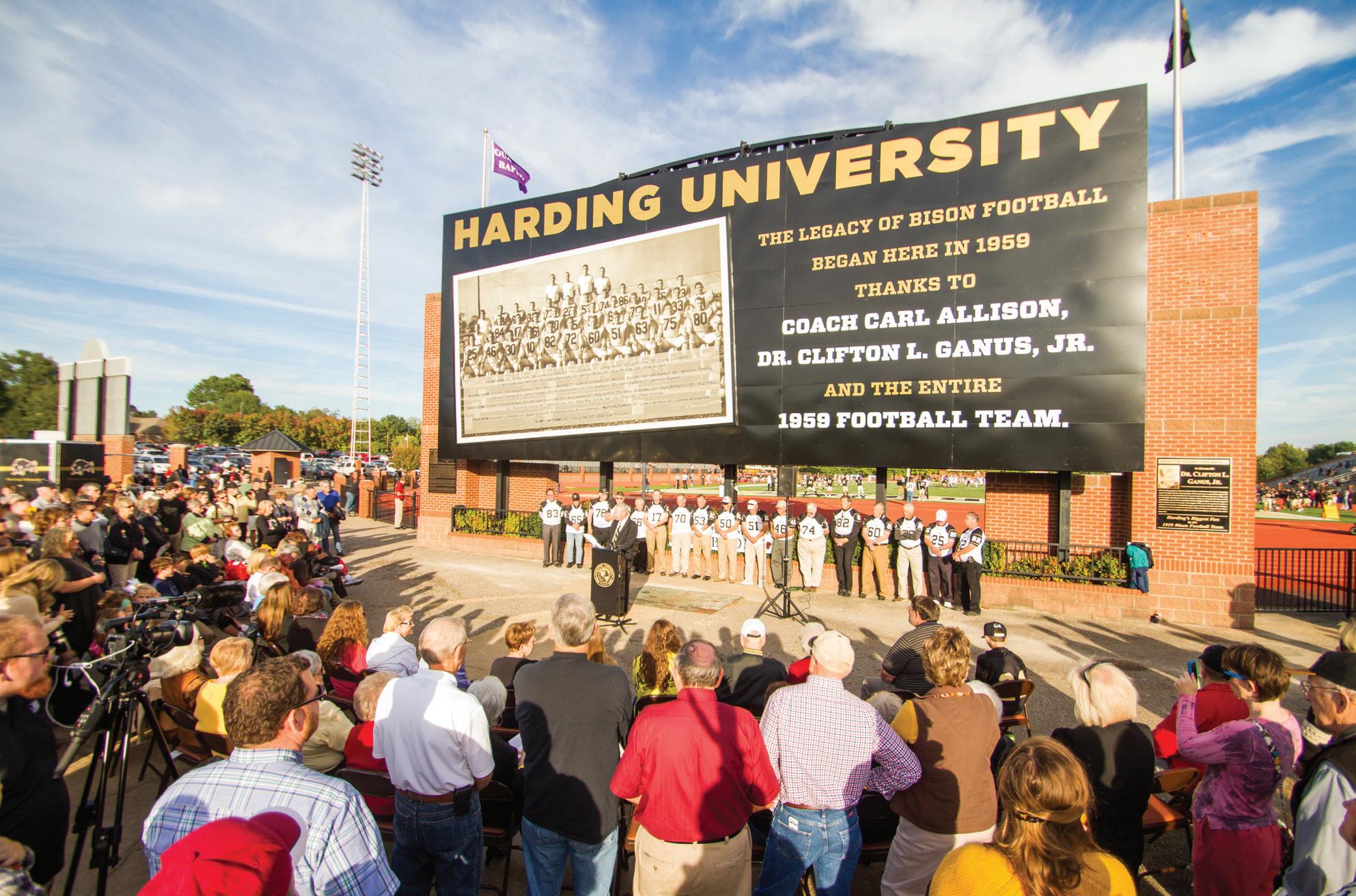
For 28 years, Harding did not field a team.That was, until then-vice president and current chancellor emeritus Clifton L. Ganus proposed reinstating football to President George S. Benson, and Harding ultimately got the go-ahead to restart the program. While resuming play was one thing, assembling a semi-competitive team on the field was another entirely. The challenge quickly went from getting football back, to putting a team together.
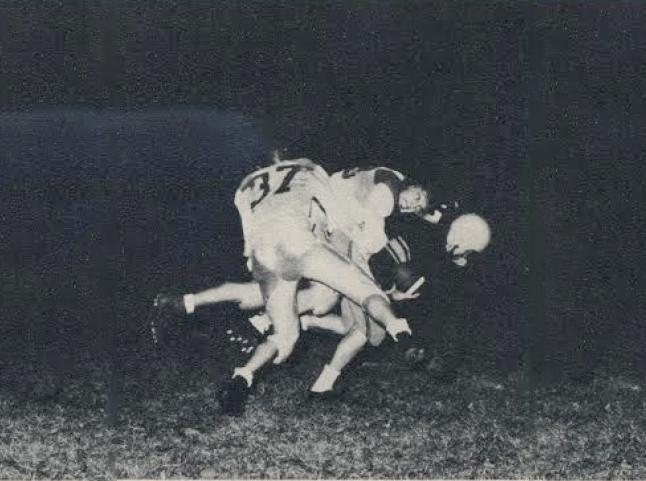
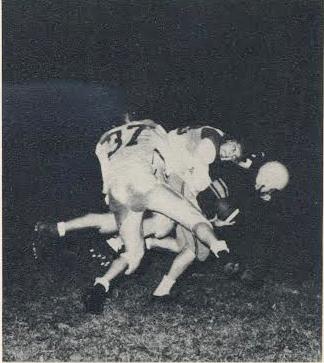
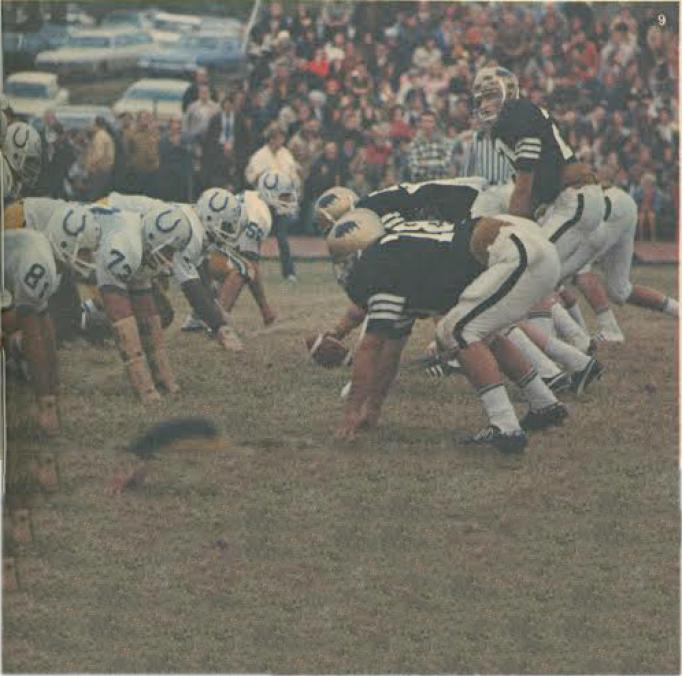
“I didn’t know anything about Harding,” Dr. Billy Joe Thrasher, an offensive guard, nose tackle and co-captain on that first team said. “I came up from Florida junior college, but was approached at a tiny little camp by a real important looking man, and I’ll never forget it, he said, ‘Are you Billy Joe Thrasher?
I’m Clifton Ganus, and I hear you can play some football.’ I went and it changed my life.”
One of the major selling points for the young and inexperienced Bisons football program was the man who was brought on to lead the team into the future in the spring of 1959: former captain of the Oklahoma Sooners, Carl Allison.
“In high school (Coach Allison) was my hero,”
Lathan Garnett, a lineman and placekicker on the ’59 team said. “I got to see the games he actually played in at Oklahoma. He played both ways, was captain, and they never lost.”
Allison, at age 26, was fresh and coming off of a football career of his own during the golden years of Oklahoma football. He was part of a team that won 47 consecutive games and two national titles — an easy salesman to high school boys looking to continue their football careers.
“(Being asked to play football) was how I got to Harding,”
Garnett said. “I was invited to come play and I didn’t even know where Searcy was.”
Jerry Mote, a sophomore cornerback and halfback at the time and now Harding football’s radio color commentator, arrived at Harding by way of football as well.
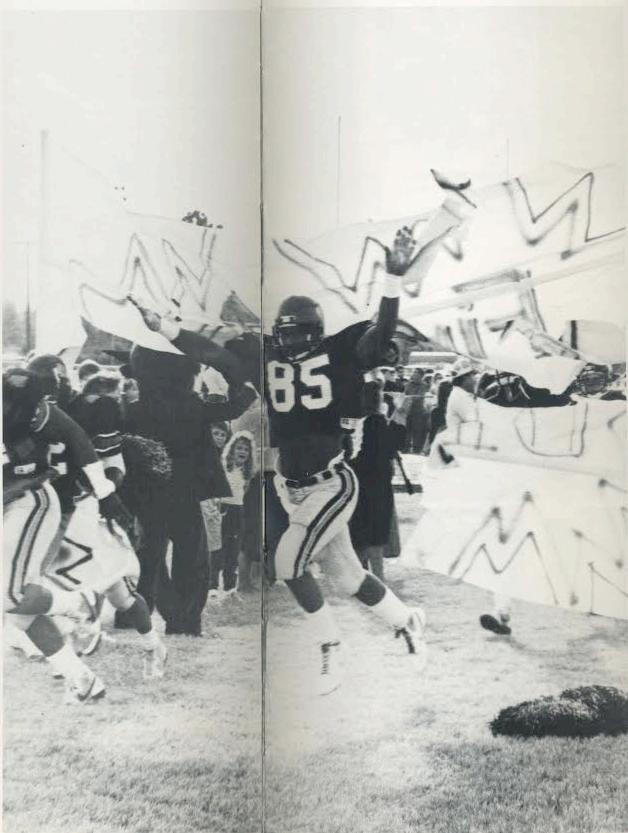
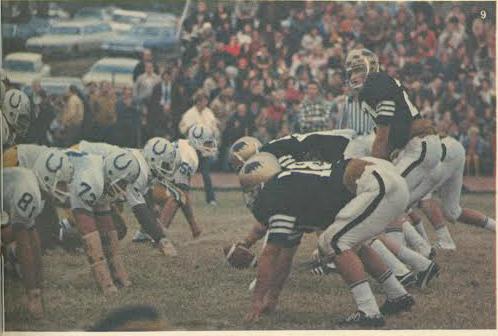
“My high school coach knew coach Allison well,” Mote said. “Coach Allison really wanted me to come and it was the best thing I ever did.”
Allison quickly began developing Harding’s football program. Using his knowledge of both sides of the ball from
his playing days at Oklahoma, Allison’s dedication and work ethic began to have an effect on the team.
“He was so intense and such a competitor,” Mote said. “Everything he ever did, he threw himself into it, and that rubbed off on everyone around him. He had incredible enthusiasm and was very knowledgeable. Playing both ways at Oklahoma was a great asset to teach both sides of the ball.”
Even with Allison’s passion and energy, that first year was a struggle. The Bisons fielded a roster of 34 players, 19 of whom
were freshmen, and it showed on the field. Harding was not allowed into conference play in their first season, so instead of facing teams of their own caliber, the Bisons faced some of the top competition in the country week after week. On top of their tough schedule, due to low numbers, many players were forced to play both ways on a team that was already thin on men. Coach Allison’s boys took their lumps, going 1-5 and suffering losses by an average of 32 points.
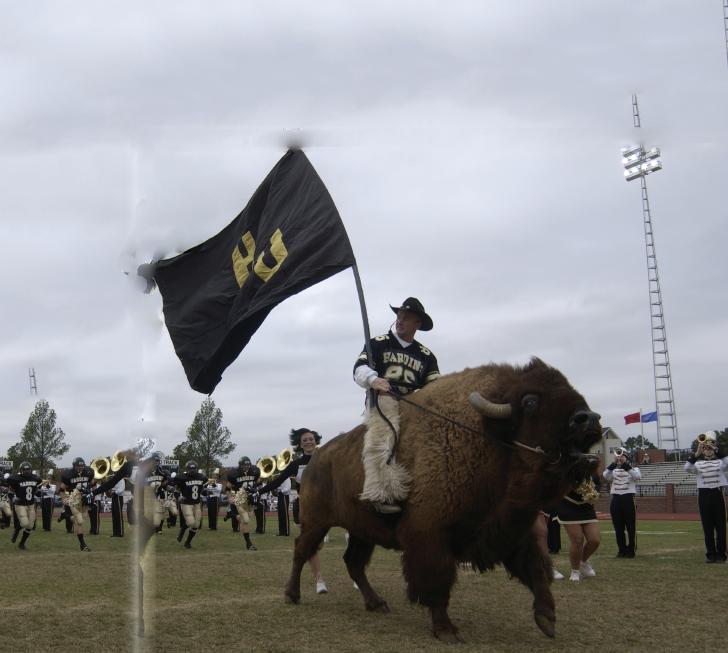
SEE 1959 BISONS, PAGE 2B
 The 1959 Bison football team stands before the newly unveiled jumbotron at the Ouachita Baptist University game Oct. 25. Bisons lost in overtime against OBU 31-28.
GRANT SCHOL | The Bison
Graphic by Cina Catteau
The 1959 Bison football team stands before the newly unveiled jumbotron at the Ouachita Baptist University game Oct. 25. Bisons lost in overtime against OBU 31-28.
GRANT SCHOL | The Bison
Graphic by Cina Catteau
Football players honored Oct. 25 for their donation of new jumbotron
I am a student. When I went home this summer, even with two years of undergraduate studies ahead of me, I made some money working an internship in an architectural office and doing some freelance work on my own for friends and family. I have a talent — or a service, to put it in economic terms — that has some value on the free market, not nearly as much value as an experienced professional, but at least minimum wage worthy. There is nothing and no one that says I cannot receive fair market value for my services, even as a student.
I am also an athlete (I play baseball here at Harding).
the NCAA after applying for his reinstatement. Meanwhile, Jameis Winston continues to play without suspension as an investigation is ongoing regarding an alleged sexual assault from late 2012.
On senior night last Saturday, Oct. 25, the men’s soccer team defeated Mid-America Intercollegiate Athletics Association (MIAA) opponent Southern Nazarene University by a score of 2-0. That win brought the team up to 4-5-1 in conference and 4-7-3 overall.
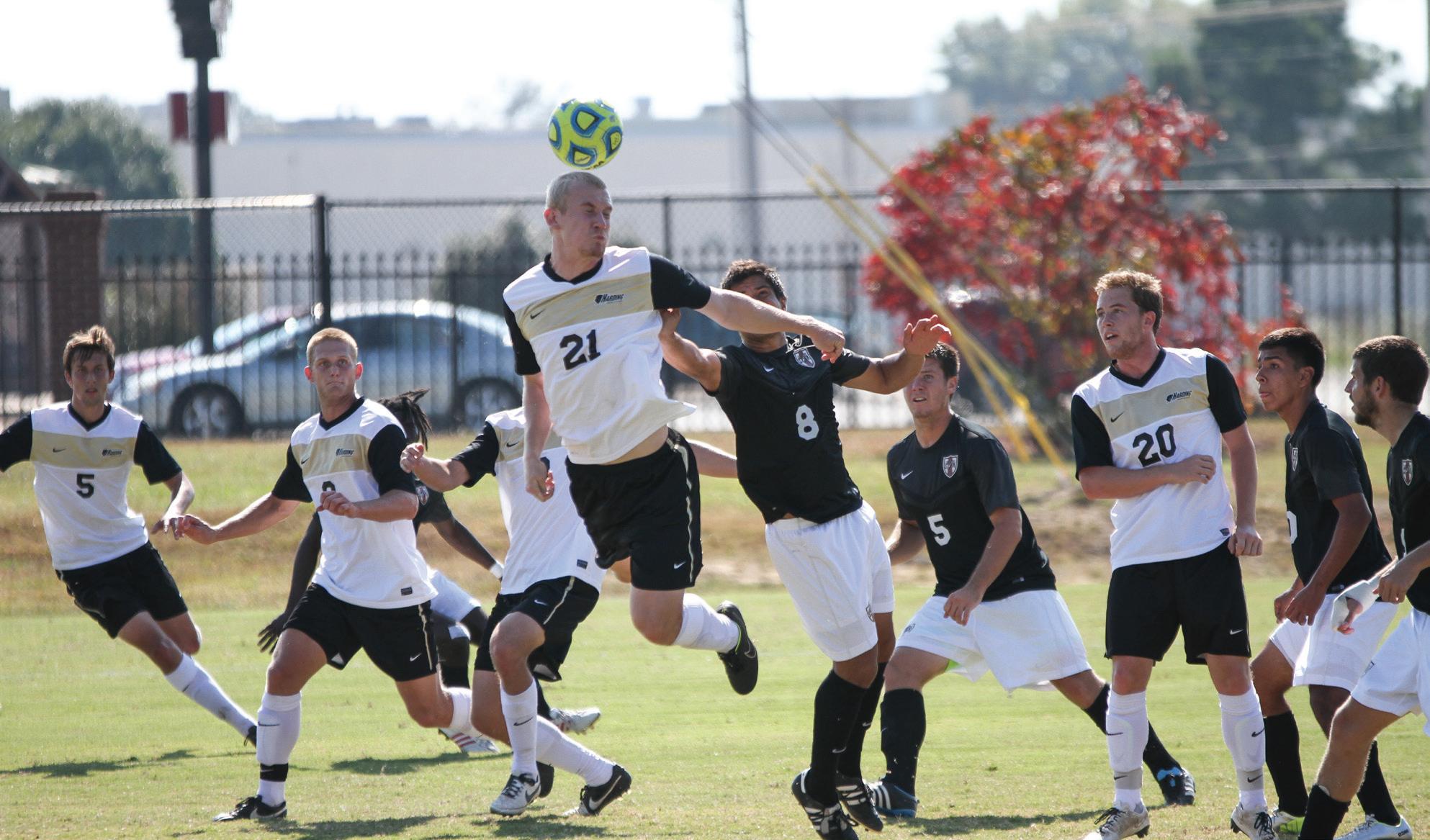
“We started to find our connection between our midfielders and our forwards,” head coach Odie Guzman said. “Not only were we finding runs quicker, but we were completing higher quality passes.”
Senior midfielder Jacob Stevens noted another reason for the team’s impressive outing against Southern Nazarene University.
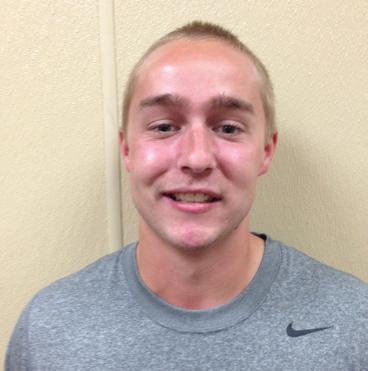
“As a must-win game, we had a different mindset as we approached the game,” Stevens said. “We had an insatiable desire to win and we knew
what we needed to do to get the victory.”
Stevens, Kevin Pineda, Ian Park, Cole Walker and Gehrig Haberstock were among the five seniors honored during that game.
“Our seniors are a great group of guys,” Guzman said. “They’re quality men on and off the field. They set the spiritual atmosphere in the locker room as well as contribute immensely to our game.”
The team has two remaining MIAA games. Both games are away, at Lindenwood University on Thursday, Oct. 30, and at Upper Iowa University on Saturday, Nov.1.
With the conference tournament fast approaching, there are a few different ways that the team could qualify. A win against the two remaining MIAA opponents would guarantee them a spot in the tournament.
If they are unable to beat Lindenwood, they will need to beat Upper
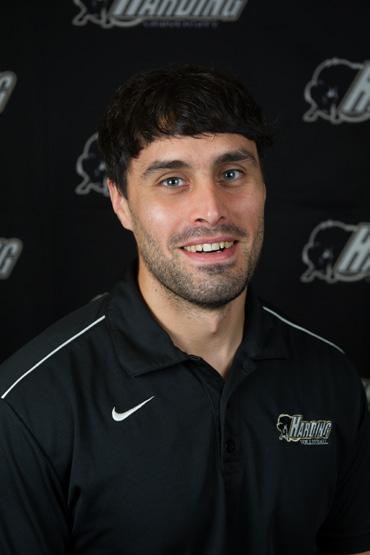
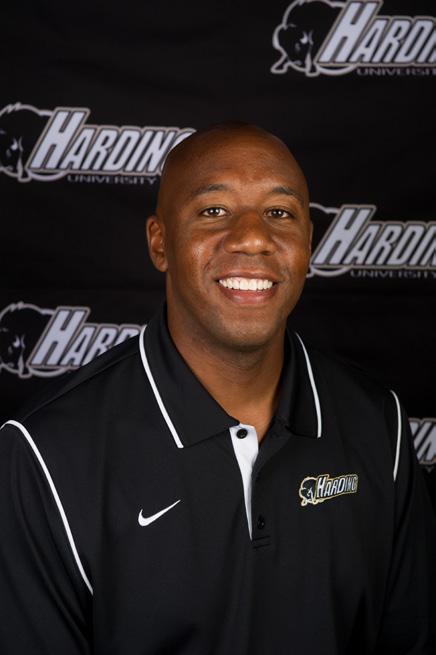
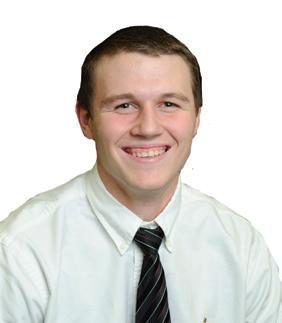
1959 Bisons, continued from 1B
Despite this, spirits never dwindled.
“Teams that wanted a patsy scheduled us,” Garnett said. “We played on a lot of homecomings. But we were a bunch of guys that just wanted to play ball.”
Mote remembered Allison’s morale through it all.
“(Coach Allison) knew we were the underdogs,” Mote said. “And when you’re the underdogs you’re always fighting for survival. But the effort was always there, every time. I can’t say enough about his leadership in the beginning.”
One of the biggest things that Allison taught them was the importance of life after football, and those lessons still ring clear to those team members to this day.
“It was as much about navigating the course of life as it was about football,” Garnett said. “I’ve made many decisions in my life based on the things he taught us.”
Those memories, along with the legacy he left behind, made wanting to honor their former coach an easy decision. So when the opportunity to build a new scoreboard was presented, all
What is one thing you can’t live without?
What is your favorite sport, besides the one you coach?
Something interesting you might not know about me is ...
What is your favorite coaching moment?
Iowa University handily for a chance to qualify.
“The best scenario is for us to go ahead and get our minds ready to beat both teams,” Guzman said. “With Lindenwood especially, we need to be fearless and courageous in our attack.”
Stevens said he uses the imposing win or go home situation as motivation.
“Especially among the seniors, the work ethic and determination has been at its peak the past couple games as we work to extend our season,” Stevens said. “I’m confident that the team will do what it takes to make it. We’ve hit our stride at the right time to qualify for the conference tournament.”
After the two remaining MIAA games, the team will host Christian Brothers University in a rescheduled match canceled due to rain. That game will be held on Nov. 3 and the conference tournament begins on Nov. 6.
the former teammates of the 1959 team knew it was the perfect way to honor both Allison’s and Ganus’ efforts in restoring the football program.
“My initial reaction was, ‘wow,’” Mote said. “But we all wanted to do something to recognize Allison and Ganus for what they did to get our program off the ground.”
Thrasher, who along with Garnett, Mote and many others from the ’59 team spearheaded the project, said that the efforts came together beautifully at the perfect time.
“All of us thought highly
of Dr. Ganus, because he really did a lot for all of us, and coach Allison being the first coach here was very important too, so it made it an easy decision (to dedicate it to them),” Thrasher said. “It happened very quickly, but I’m glad it was done. It’s a great thing.”
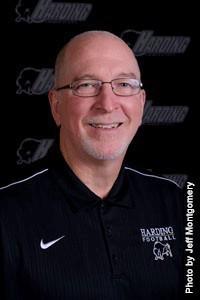
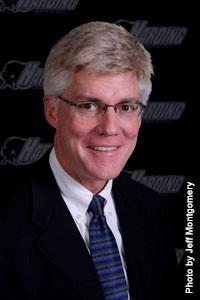
Harding football has come a long way. And now, 55 years removed from that 1959 team, as Harding football enjoys its finest run in school history, it only seems fitting that we honor the men who started it all and in the process, left a lifelong legacy of brotherhood that the Bisons of today still look to uphold.
I am not allowed to make money, even at fair market value — which would probably be low as a DII baseball player — because the NCAA says I can’t. If a sports memorabilia store owner here in Searcy came up to me and said, “Hey, we have several customers who are Bison baseball fans. Can I pay you $20 to come sign baseballs for an hour?” I would be slapped with a suspension.
It is also important to understand that not all college athletes are on “free rides.”
Only six sports are full-scholarship sports: football, men’s and women’s basketball, women’s gymnastics, volleyball and tennis.
How does that make sense?
I can make money for one service, but not for another? It doesn’t make sense, but that’s the dilemma University of Georgia running back Todd Gurley II has found himself in. He reportedly received monetary compensation for signing his autograph for a sports memorabilia broker in Rome, Georgia and was suspended by UGA’s Athletic Department. Being a Georgia native, my entire twitter feed was full of #FreeGurley tweets when the news broke. He has currently missed two games — including a 45-32 win over Arkansas, #WPS — and could miss more while the school waits to hear from
Now look, Gurley did break an NCAA rule, and regardless of how asinine the rules are, you know that you have to follow them. But the NCAA is literally robbing student-athletes everywhere and running an extremely lucrative monopoly, all in the name of “amateurism.” For example, the University of Georgia’s total revenue in 2013 was $98,120,889, only good for 16 nationally; even my former school, the College of Charleston, South Carolina, ranked 132 in Division I, brings in $15,849,270. But student-athletes don’t see a dime of that money.
The NCAA is raking in billions on free labor; any corporation in any other industry would be terminated on human rights’ violations for that kind of economic disparity.
It is also important to understand that not all college athletes are on “free rides.” Only six sports are full-scholarship sports: football, men’s and women’s basketball, women’s gymnastics, volleyball and tennis. In every other sport, almost all of the athletes are on a partial scholarship, if any at all. Baseball at the DI level only gets 11.7 full scholarships even though most rosters have 35+ guys.
So let’s not pretend all student-athletes petitioning a rules change are just whining for some extra spending money. Sure, most of the athletes who would benefit from an NCAA rules change would be football players on full scholarships, but what happens if that sports dealer ever did walk up to me?
It’s time the NCAA changed the rules and quit utilizing free labor to bring in billions of dollars in revenue. It’s not just time to #FreeGurley; it’s time to #FreeStudentAthletes.
Chocolate, specifically Dove dark chocolate.
Olympic gymnastics.
I’m blind in one eye ... and I lie sometimes.
Witnessing four of our players be baptized, two here and two at my previous school.
Ice cream. My quiet time and prayer.
Golf. I’m still trying to master a sport that can’t be mastered.
I sang “Gimme 3 Steps” at a concert in the old Admin Auditorium in 1976.
Last Saturday (beating Henderson State) was pretty special.
College football.
My brother played for the Miami Dolphins.
When the women’s soccer team made it to the NCAA tournament in 2004.
Potatoes and, of course, my boys. I color my hair grey.
High school and college football.
There have been 30 years of many great memories — watching the athletes have success and their excitement.
I was No. 7 in the world on NCAA Football 13 on the Xbox 360.
Most students are well aware of Harding’s emphasis on encouraging people to get out and serve the community, but aside from club service projects and the annual Bisons for Christ service event, it can be difficult to find ways to contribute. In response to this difficulty, the Student Association (SA) and the Student Life Committee are currently working to create a way to inform students of service opportunities through a newly revived program called “Harding in Action.”
Harding in Action is a service the SA plans to provide that will collect service project ideas and match them up with interested students. Dean of Student Life, Zach Neal, said the SA originally started Harding in Action several years ago, but the program eventually evolved into Bisons for Christ and died out.
“Harding in Action was designed to make students aware of opportunities to serve in the community, just as simple as that,” Neal said. “Through the years it fluctuated, depending on the interest of the SA in continuing this. Since I got here in ’06, Harding in Action eventually evolved into Bisons for Christ. While the SA would still try to help with other projects, the name ‘Harding in Action’ faded away for a while and projects weren’t organized the same way they could be and had been in the past.”
One of our dreams and goals in creating this is to create opportunities for Harding students to serve. Often we get so involved in school and clubs and all sorts of activities that we don’t have the time to proactively get out in the community to find places to serve.
- Truett Keener, sophomoreNeal said that around that time, the Rock House, a service and college outreach ministry of the College Church of Christ, started organizing service projects, but the projects tend to be more geared towards larger groups and organizations, as opposed to individual students. According to Neal, this year’s SA members were unaware the program existed until they found it buried in the SA handbook.
“Kind of like how King Josiah of the Old Testament unearthed the writings of scripture after they had been lost, it was a little bit like that when the SA realized ‘Whoa, this is in our handbook already, what is this,’” Neal said.

Senior Stephany Ayestas, who serves as the chair of the Student Life Committee, said she felt there was a great need on campus for a program like this and is excited to be leading the way to bringing the program back.
“I read the SA handbook and I’ve always been interested in helping (others), so when I saw that (Harding in Action) was here but wasn’t happening, I asked Philip (Habegger, SA President), and Philip asked Dean Neal if we could do it,” Ayestas said. “We also talked to the student life committee, because not just one person could make this happen, and a lot of people were happy to help.”
Ayestas said Harding in Action hopes to begin sponsoring service projects in mid to late November. Sophomore Truett Keener, a member of the Student Life Committee, said he thinks the program will help students be more aware of the needs around them and get them more involved in Searcy community-life.
“One of our dreams and goals in creating this is to create opportunities for Harding students to serve,” Keener said. “Often we get so involved in school and clubs and all sorts of activities that we don’t have the time to proactively get out in the community to find places to serve. So this will create that opportunity. And one of my own goals with this is to show students that there are op portunities all around us, all the time; there are opportunities to bless people wherever you go.”
The Thundering Herd marching band is the sound of the football field and the music in the stands of the Rhodes Field House.
According to Wesley Parker, the director of the band, their show features music from a legend.
“Elvis is pretty far-reaching, even college students know who Elvis is and probably have heard a handful of Elvis songs,” Parker said. “Whether it’s in movies, or on the radio or whatever, but it goes all the way through the older generation. They all know Elvis and the songs.”
According to Parker, the Thundering Herd has a new look along with a new sound, including music from Daft Punk.
“For the first show I wanted it to be more modern, more new, more fresh,” Parker said. “That was kind of the idea behind it, to come out with new uniforms and then also come out with a little bit of a new sound.”
According to Parker, one of the best things about band directing is the students.
“I love my students,” Parker said. “My students make my job absolutely one of the best things that I could possibly imagine.
They’re easy to work with, they’re fun, they know how to laugh, but they know how to get things done. They know how to be serious whenever they need to be.”
One of the students that Parker admires is freshman Payden Taylor.
Taylor is a cancer survivor and a tuba player for the Thundering Herd.
“Payden is a helper, he is that definition to a T,” Parker said. “If you need anything done, Payden is there, and he is not just there whenever he sees that you need something, he will come up to you out of the blue and say ‘what can I do for you? If there is anything that you need done I’ll be glad to do it.’”
Taylor was diagnosed with Hodgkin’s lymphoma in August 2010, a cancer that affects the lymph nodes.
“I had a lot of faith in the doctors who were telling me, as far as cancer went, this is a very treatable condition,” Taylor said. “It’s been around since doctors knew that cancer was cancer, and then on top of that I had a really supportive church family. They went out and made t-shirts, and sold these t-shirts, and all the proceeds they deposited to a little fund that went towards my family
paying for my treatment.”
Besides a supportive church family, one of the things that helped Taylor through his treatment is what he loves to do best: play music. Taylor said the stylistic variety of music the band played that year helped him cope with the struggles he faced.
“I think God used the choices that my directors made that year as a way to connect me to the music on an emotional level, and ever since then I’ve just fallen more and more in love with music day after day,” Taylor said.
According to freshman and alto saxophone player Erin Schuler, one of the best things about being a part of the Thundering Herd marching band is the connections with fellow band members.
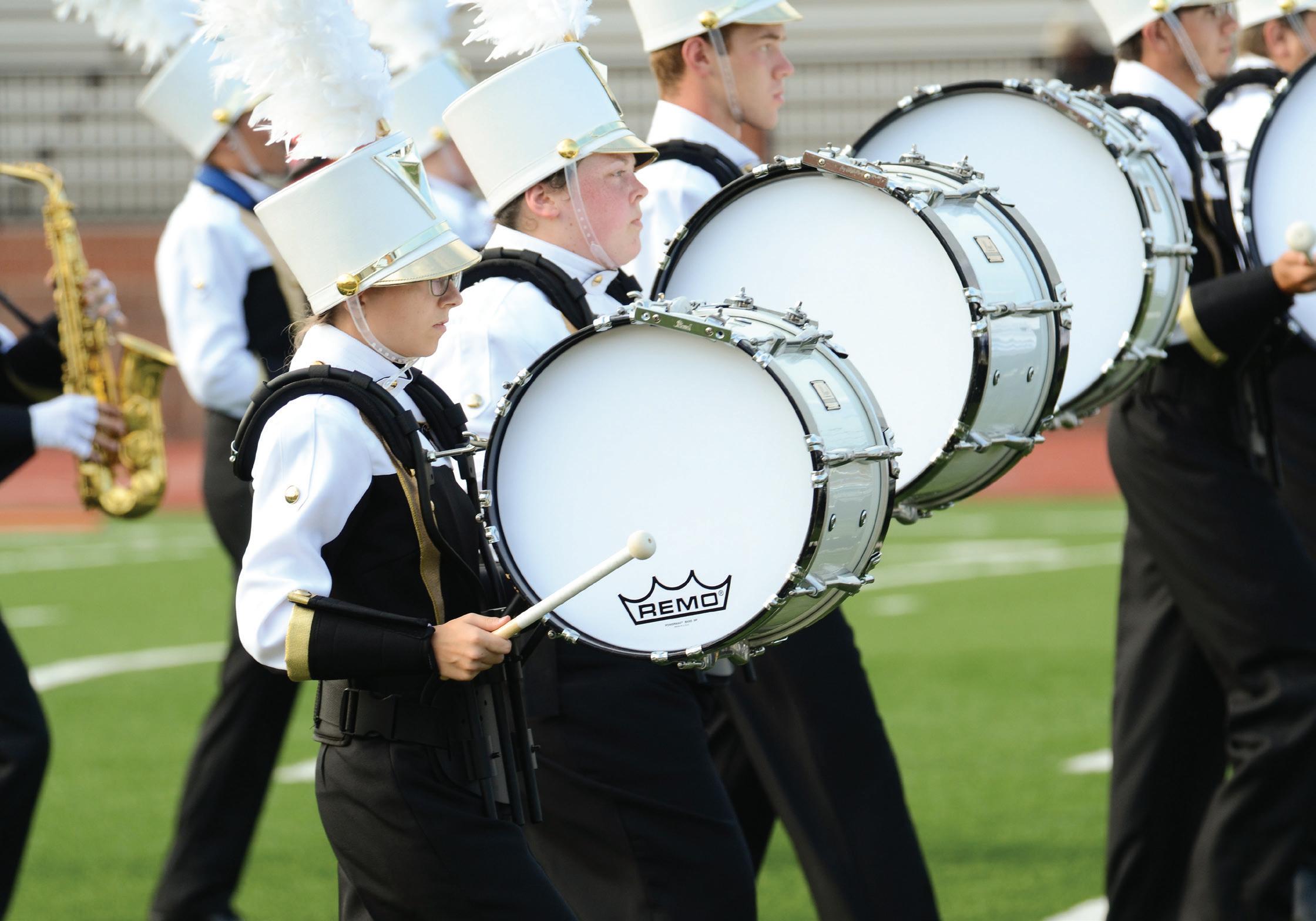
“You make a new group of friends and they’re really welcoming of you,” Schuler said. “They help you in any way and they don’t bring you down, they always lift you up.”
According to Taylor, being a part of the band is like being a part of a family.
“It’s even more of a family here than it was in high school,” Taylor said. “The first week we came out before school started for band camp and just right away you could feel the family ties already starting.”
Hunter Beck
Beat Reporter 1. Neutral Milk Hotel
the Aeroplane Over the Sea” (1998)
Recorded and produced in the home studio of a band member, Neutral Milk Hotel’s second album proved to be one of the most crucial records for independent bands looking to create lo-fi, honest music without the oversight of major labels.
Lyrically, “Aeroplane” may be the most curious, bewildering album you’ll ever hear. Hollering with a rough, unfiltered voice, Jeff Mangum seems to offer a brutal honesty few would dare expose, yet you can’t really dissect the confessions or curiosities he expresses. He couples sparse, cryptic accounts of what sound like childhood memories with clear, distinct narratives of things that can’t be real, invoking imagery and emotion as he shifts back and forth between introspection and storytelling.
While there’s little production, the album hosts a number of instruments, from Mangum’s simple acoustic guitar to Scott Spillane’s loud but sophisticated horn section, with the in-between including a banjo, an accordion, and a saw — yes, an actual saw — played with a violin bow. The title track “In the Aeroplane Over the Sea” consists chiefly of clean strumming and a tight drum beat interrupted by a tight trumpet solo. Tracks like “Two-Headed Boy” and “Oh Comely” offer nothing more than a rough guitar and inquisitive, introspective lyrical reflections. Tracks like “Holland, 1945” and “Ghost” back creative, hyperbolic plots of humanity with distorted guitars, heavy percussion, loud horns and white noise composed with deceptively complex arrangement.

For their third album, Spoon abandoned their sloppy sound of angry vocals over harsh guitars and loose drums. In the process, they created one of the decade’s most unique albums. Of course its originality is what makes the album stand out, but nothing about the album itself really stands out at first. The creative difference that sets this album apart rests in subtlety. The careful arrangement of instruments coming in and out creates an atmosphere throughout the record.
Like so many records, this one is full of sharp electric riffs, energetic piano rhythms and delicate percussion fills. The difference is that for most of the tracks on this album, these staple instruments serve as no more than auxiliary sounds for straight-forward, punchy bass lines and clean, tight drum beats. A perfect example is the opening track, “Everything Hits At Once.” A jumpy piano rhythm and bright guitar riff offer an energetic opening and chorus before synthesizer solos and fills. But the only music heard throughout the verses consists of a repetitive, catchy bass scale and a steady, simple drum pattern. Similarly, while songs like “Me And The Bean,” “Lines In The Suit” and “Take The Fifth” find energy and fervor from confident guitars and persistent piano. They revolve around bass lines and drumbeats. Some tracks like “The Fitted Shirt” and “Take A Walk” offer more straight-forward, guitar driven rock, and “Anything You Want” thrives off the keyboard, however the ubiquitous rhythm of bass and drums create the atmosphere that makes the album so mysteriously emotional.
Check out the next issue of The Bison for Hunter’s other two picks for top turn of the century albums.
Haleigh Edge
Ghostbusters (1984, PG)
PLOT:
After losing their jobs at a university, three quirky scientists take up jobs capturing spirits and ghosts. They soon discover a supernatural problem and must save New York City.
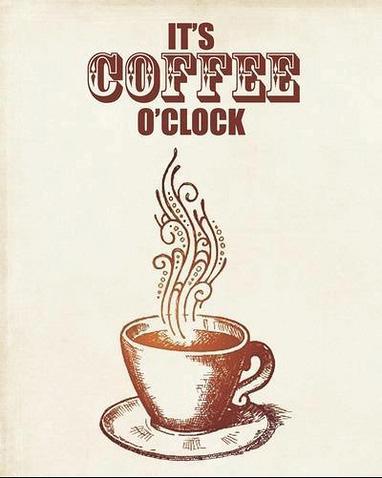
WHY WATCH?
“Ghostbusters” is a funny “scary” movie. It’s not horrific and doesn’t leave you scared to death, too afraid to go to sleep at night.
Bill Murray brings a lot of comedy to the storyline, and ’80s special effects are fantastic.
Zach Hailey
The Nightmare Before Christmas (1993, PG)
PLOT:
“The Nightmare
Before Christmas” is about the “Pumpkin King” of Halloween growing tired of the same old Halloween feel. In a world that is filled with ghouls and witches, Jack Skelington discovers a new world, Christmas Town. Mesmerized by the lights and snow, Jack attempts to recreate Christmas in his Halloween Town.
WHY WATCH?
“The Nightmare
Before Christmas” is a great transitional movie for those who simply love the holidays. Filled with several catchy songs and award winning, stop-motion animation, this film is an instant classic that teaches an interesting lesson to the whole family. This film is available at any super store and on Netflix.
Hunter Beck
Psycho (1960, R)
PLOT:
A secretary steals $40,000 in cash and goes on the run. She finds more than she bargained for when she checks into a remote hotel off of the highway.
WHY WATCH?
Alfred Hitchcock’s “Psycho” is all about the atmosphere. One of the first thrillers to focus on the contribution of sound, the movie offers chilling music and piercing sound effects that add a strong sense of tension. The movie is full of motifs and foreshadowing, and you’ll notice something new every time you see it. The movie caps off with one of the most memorable plot twists in cinematic history.
Rachel Brackins
The Village (2004, PG-13)
PLOT:
The people of the village are content with living in isolation. They are self-sufficient and have vowed to never enter the surrounding woods, where unknown creatures reside. The village’s safety is compromised when curious, bold Lucius Hunt plans to break the rules and go beyond the boundaries of the town into the unknown.
WHY WATCH?
“The Village” is a well thought out suspense-filled tale that does not lean on gore to entertain. The story is interesting, the characters are easy to relate to and the puzzle will keep the audience guessing until the final minutes. Those looking for buckets of blood will be disappointed, but puzzle-lovers will enjoy it.
Cole Mokry
The Ring 1 & 2 (2002, 2005, PG-13)
PLOT:
“The Ring” and “The Ring Two” are spooky movies that focus on inhabitation, curses and a relentless pursuit. “The Ring” hit theaters in 2002 and is based on an urban legend of a videotape that exterminates anyone who watches it within seven days. Samara, the creepy girl with a horrific story, is the haunting face and cause behind the dark tape.
“The Ring Two” was released in 2005 to spur on the curse and this time, Samara is back and will not stop until she gets what she wants.
WHY WATCH?
Both of these have been favorites of mine ever since I was a in middle school. I remember seeing both of these movies in theaters, and because of their classic factors, both of these movies tell a thrilling story of how the dark intentions of one person can affect the lives of many. These movies exemplify scary movies done right.
Poltergeist (1982, PG)
PLOT: “Poltergeist” is about a family whose house is possessed by evil spirits. The spirits kidnap the youngest daughter and take her into a different dimension. The family calls upon the help of an eccentric psychic to rescue her before the house itself is swallowed by the spirits that inhabit it.
WHY WATCH?
“Poltergeist” is a cult classic in the horror genre. The cheesy ’80s-ness takes away from the scariness, but it adds an element of charm and antiquity. While not being as frightening as other horror movies like “The Exorcist” or “Halloween,” “Poltergeist” is an absolute necessity if you want a well-rounded vocabulary of scary movies. There are also rumors of a “Poltergeist” curse — fueled by the untimely deaths of four of the cast members.
Shane Schock Ernest Scared Stupid (1991, PG)
PLOT: This movie is full of comedy and centered around a man who unleashes the evil trolls of a small city. He and the neighborhood kids work together to fight back against these ugly creatures and take back Halloween.
WHY WATCH?
This movie is full of fun and excitement for young and old audiences. It has mystery and suspense as you watch how Ernest and the group look to take down these taunting trolls. This movie is one of the best for young Halloween lovers.